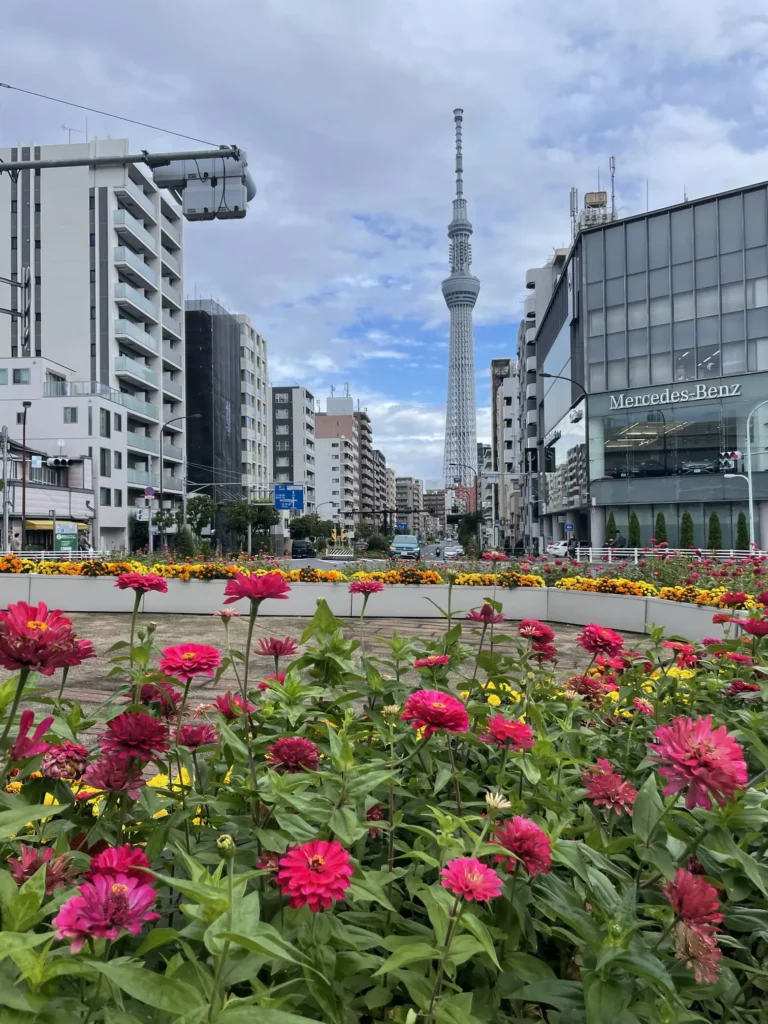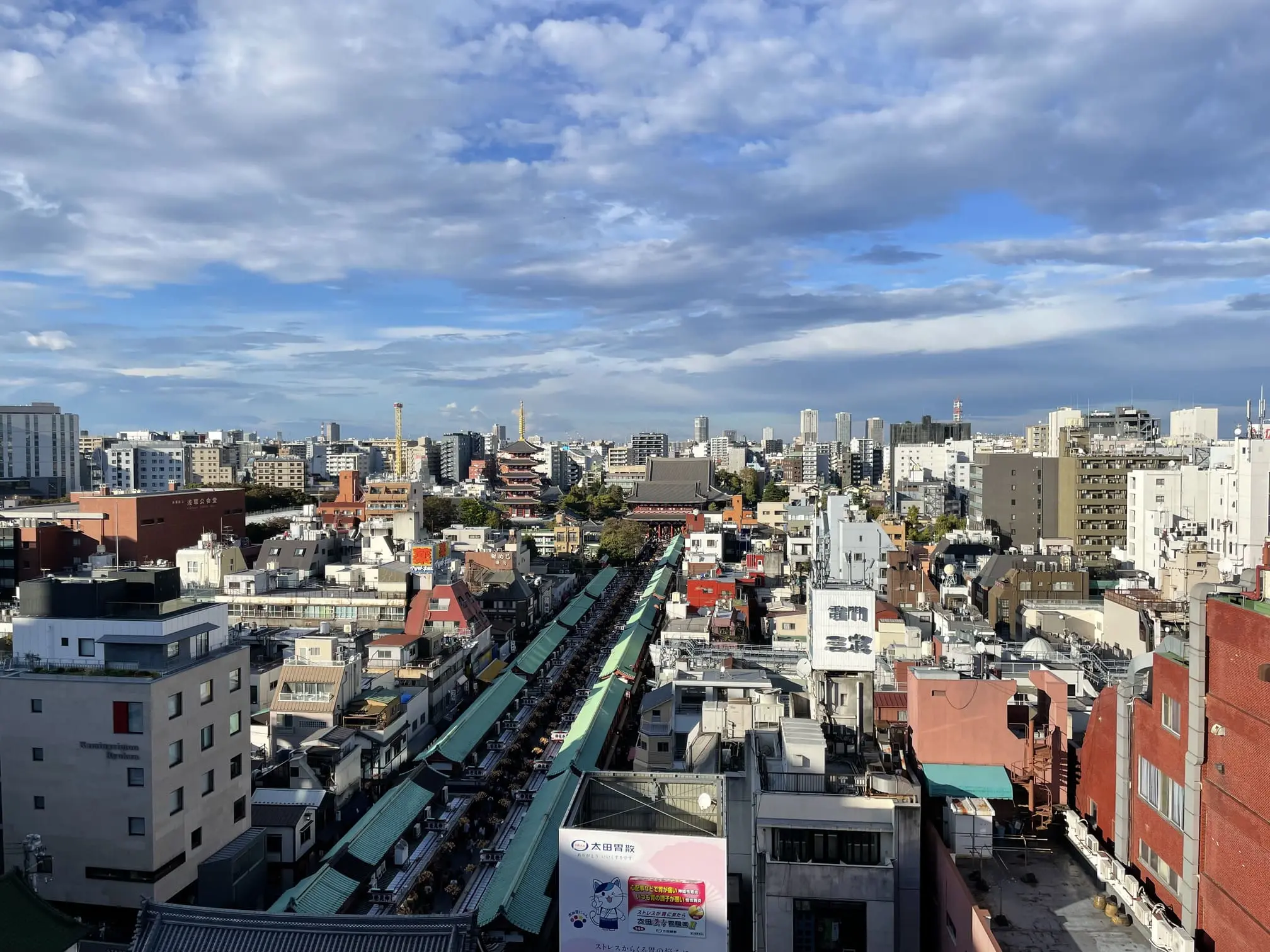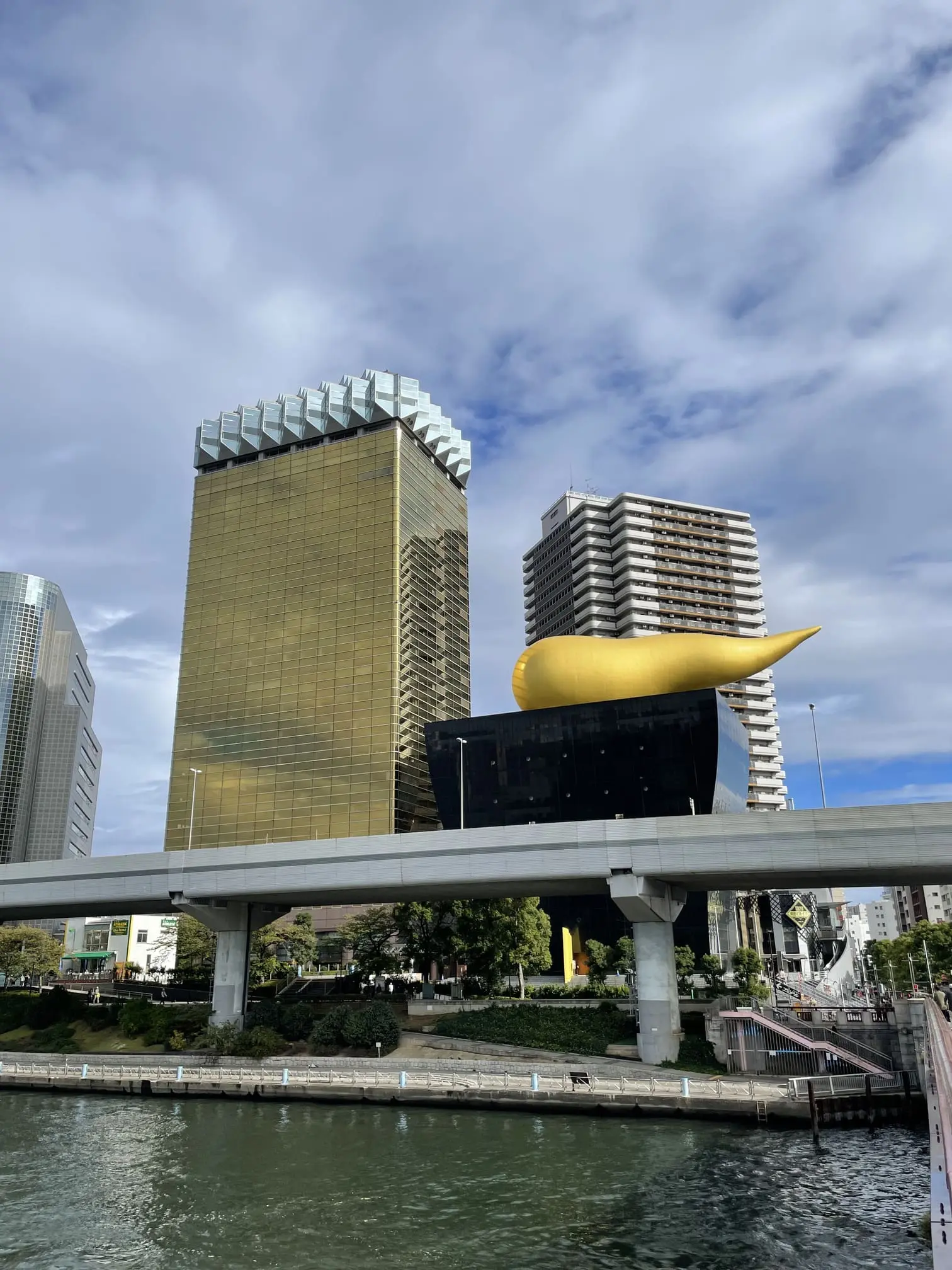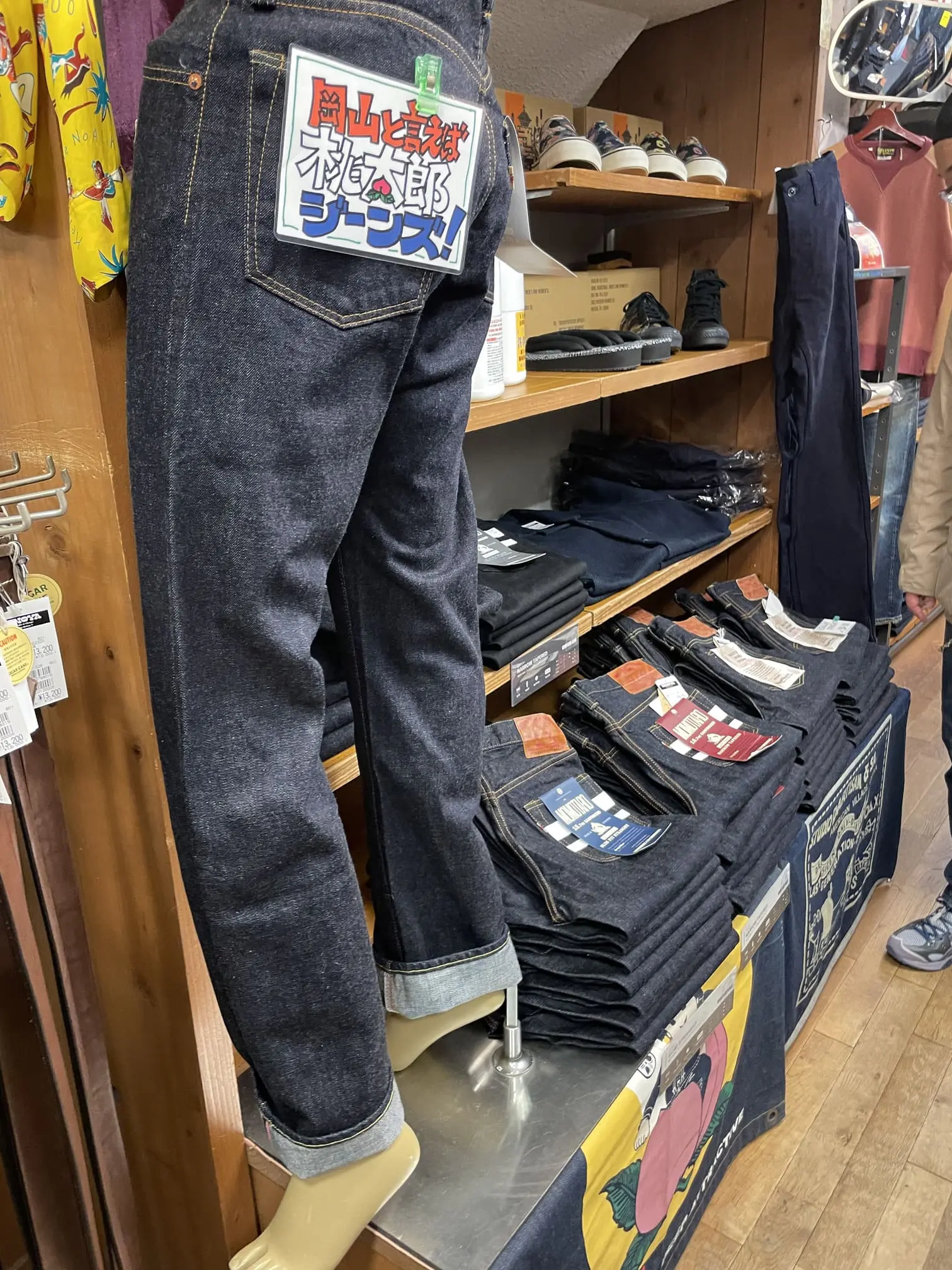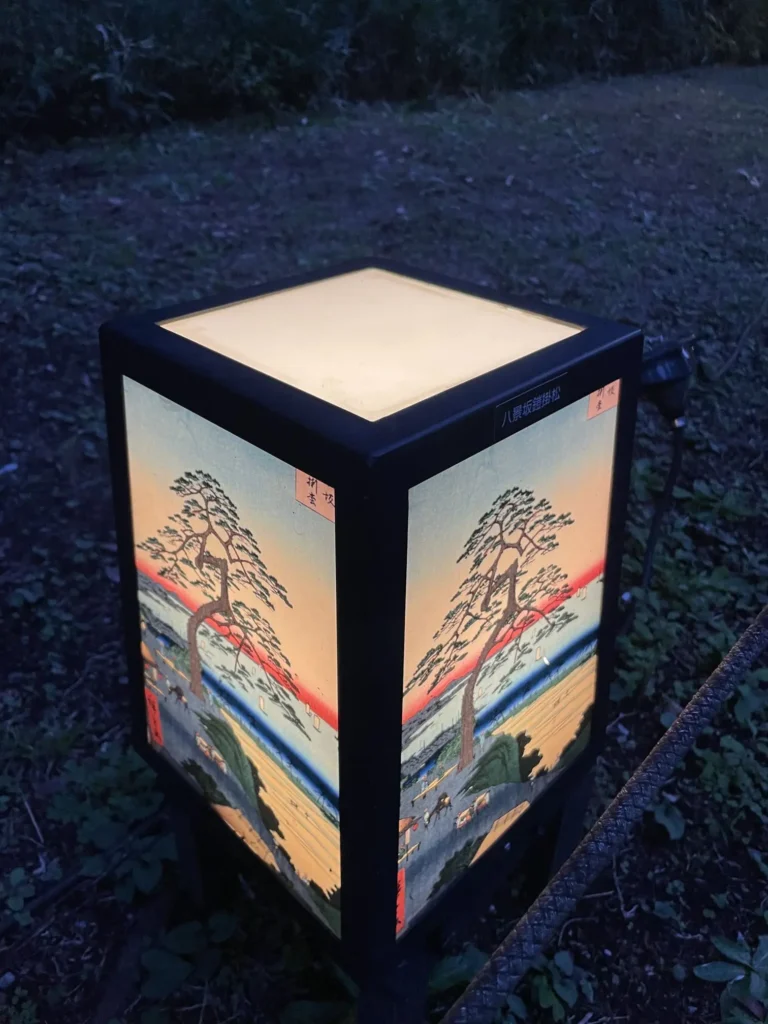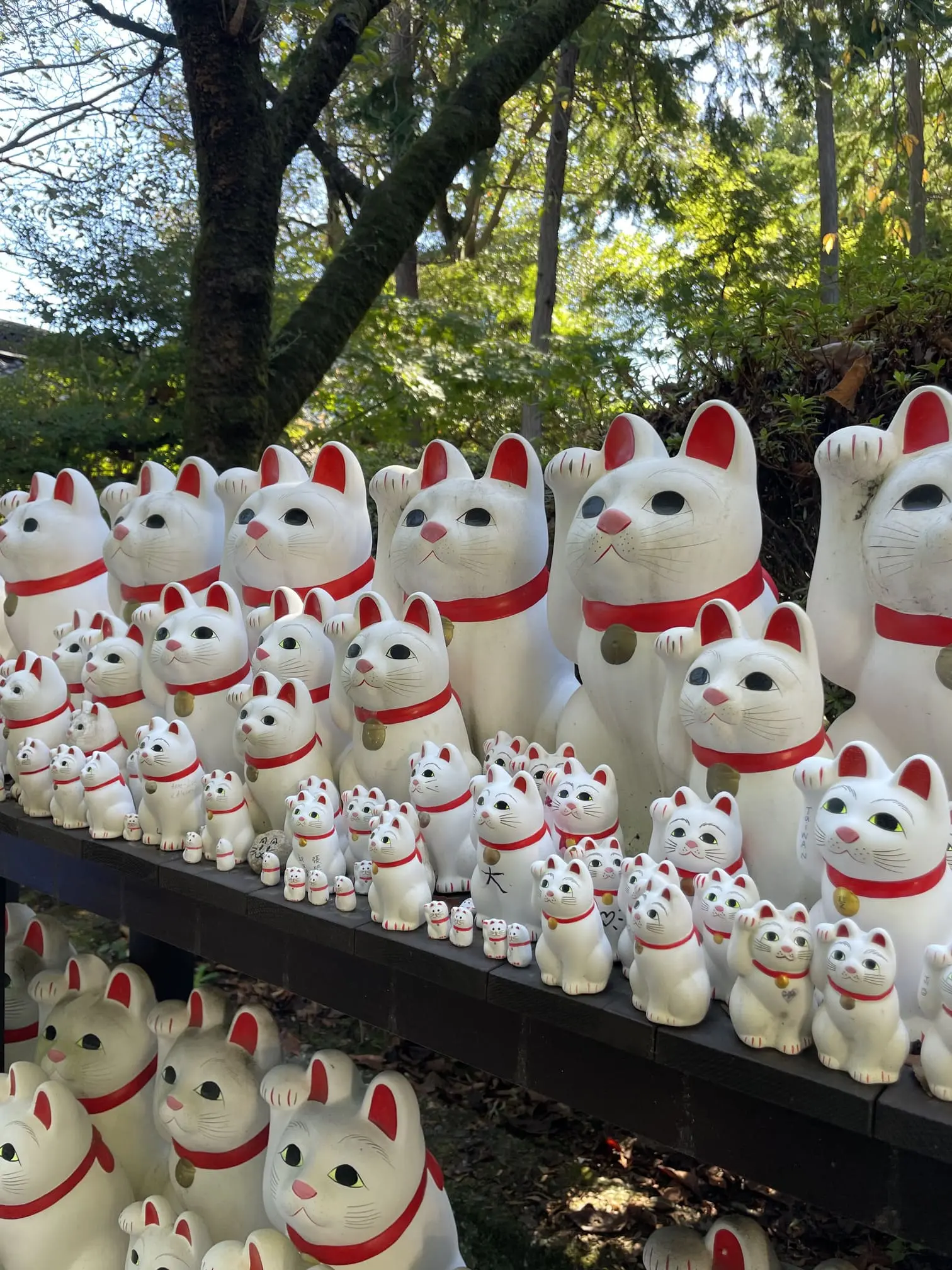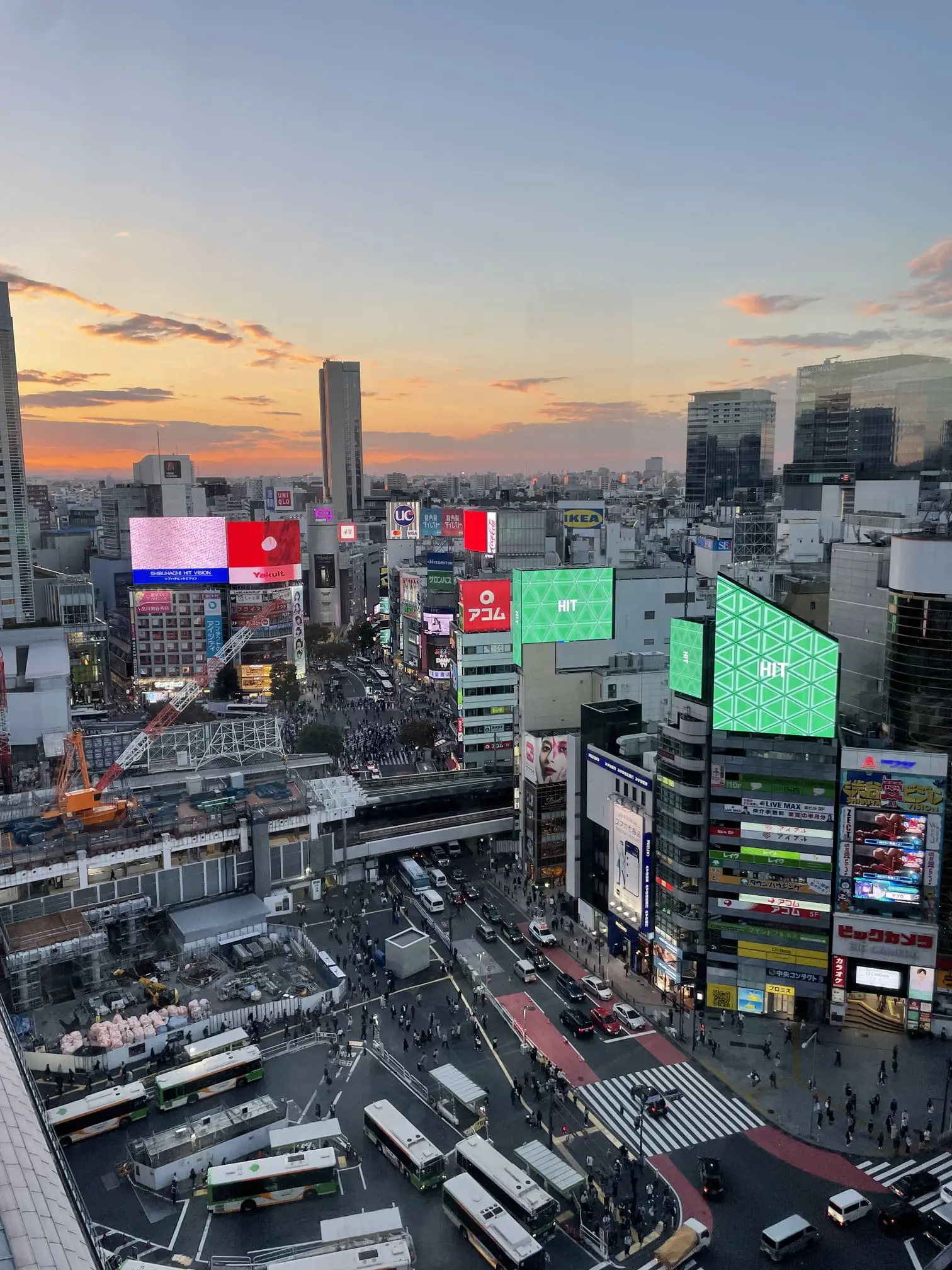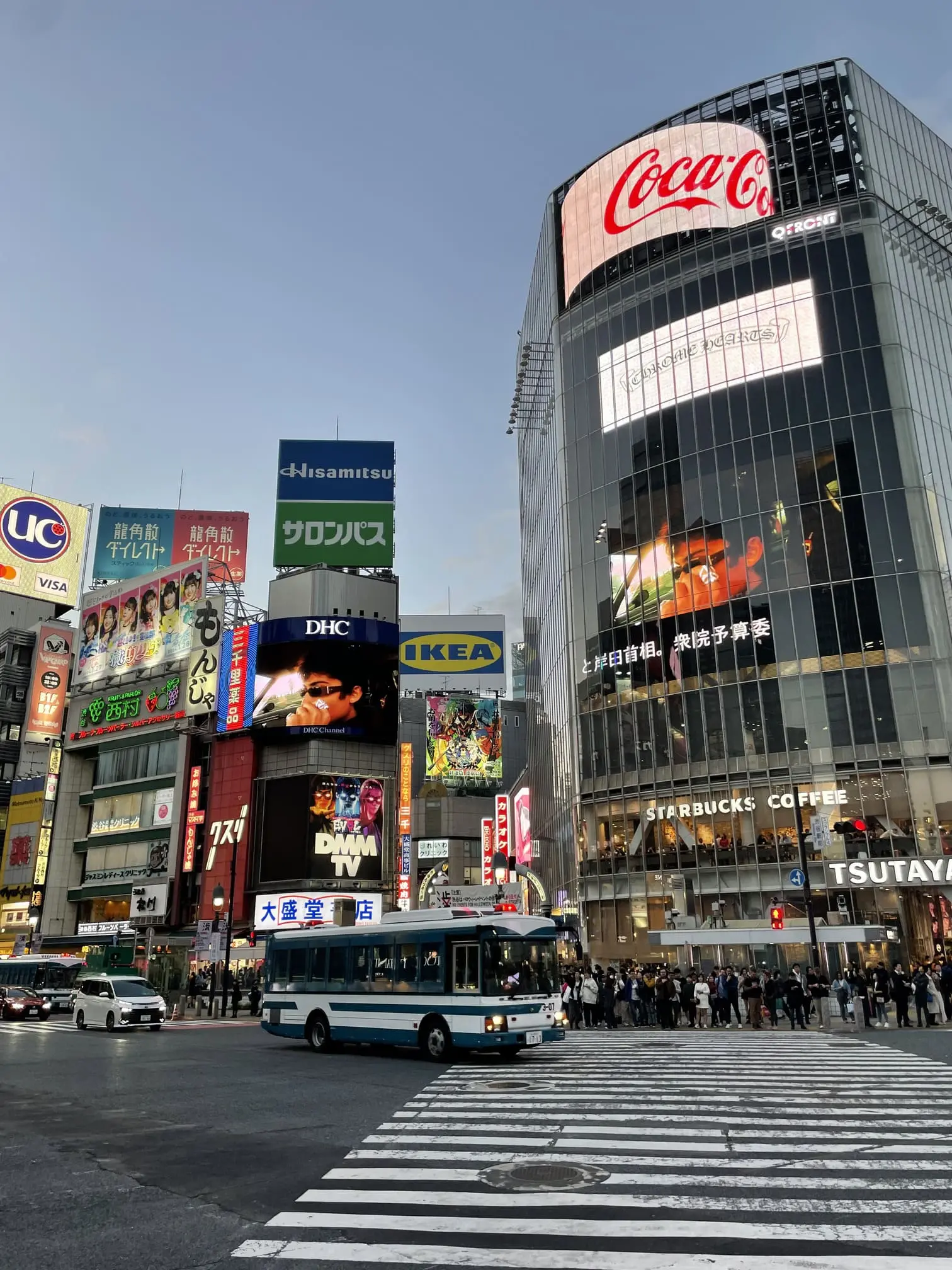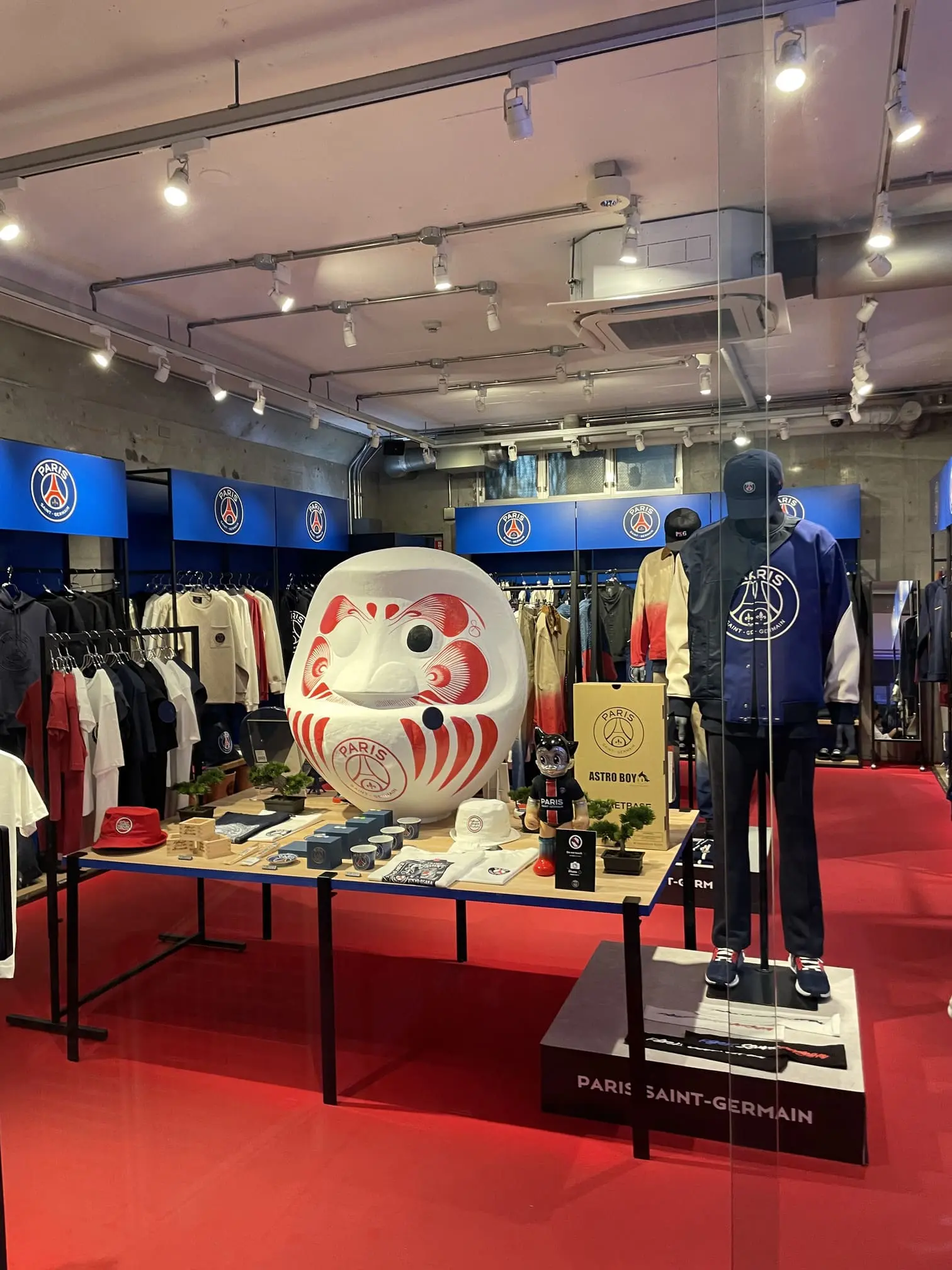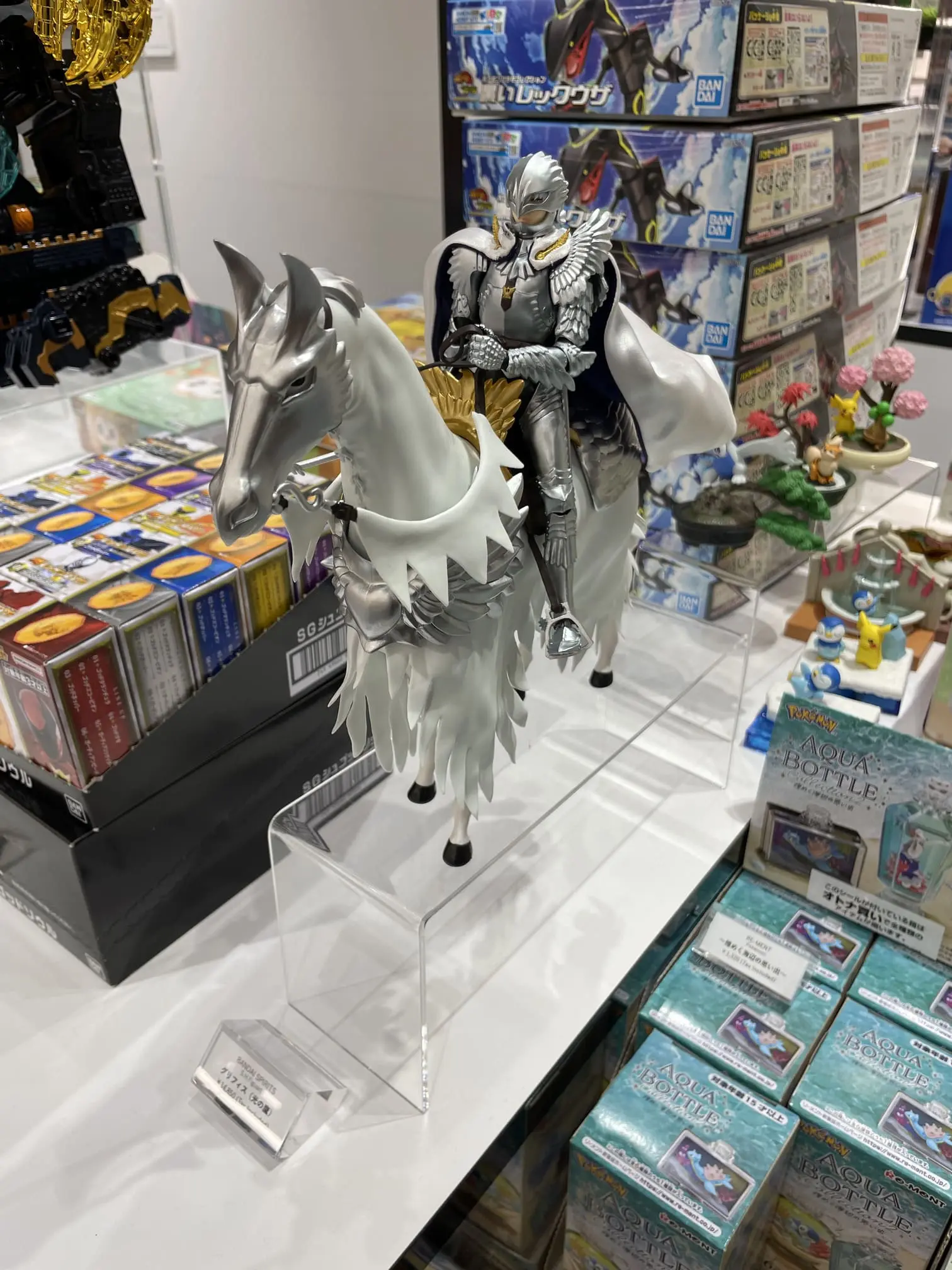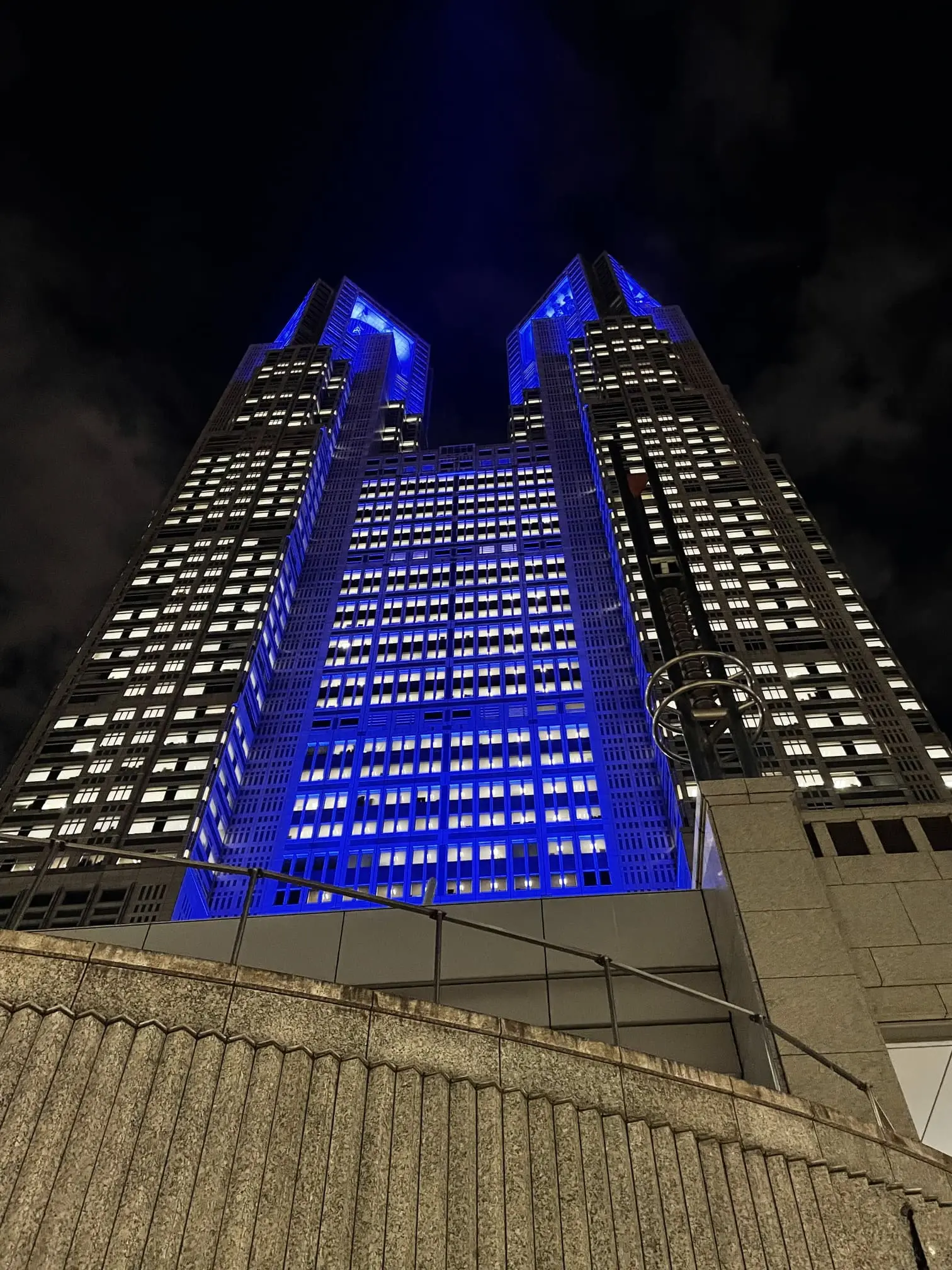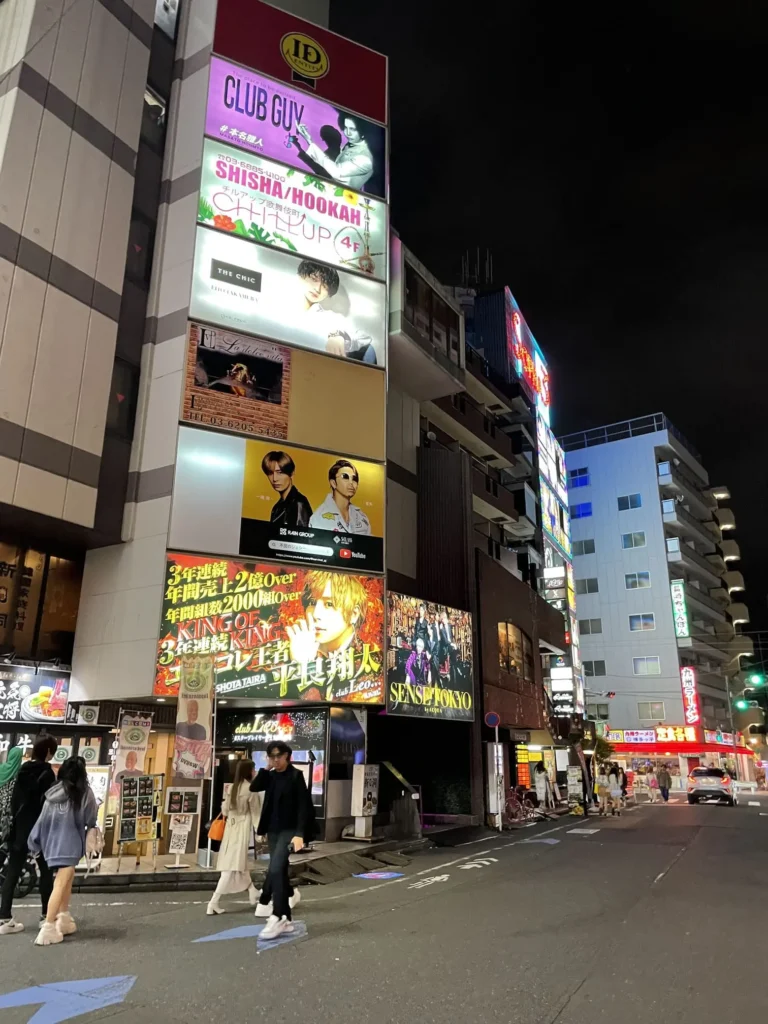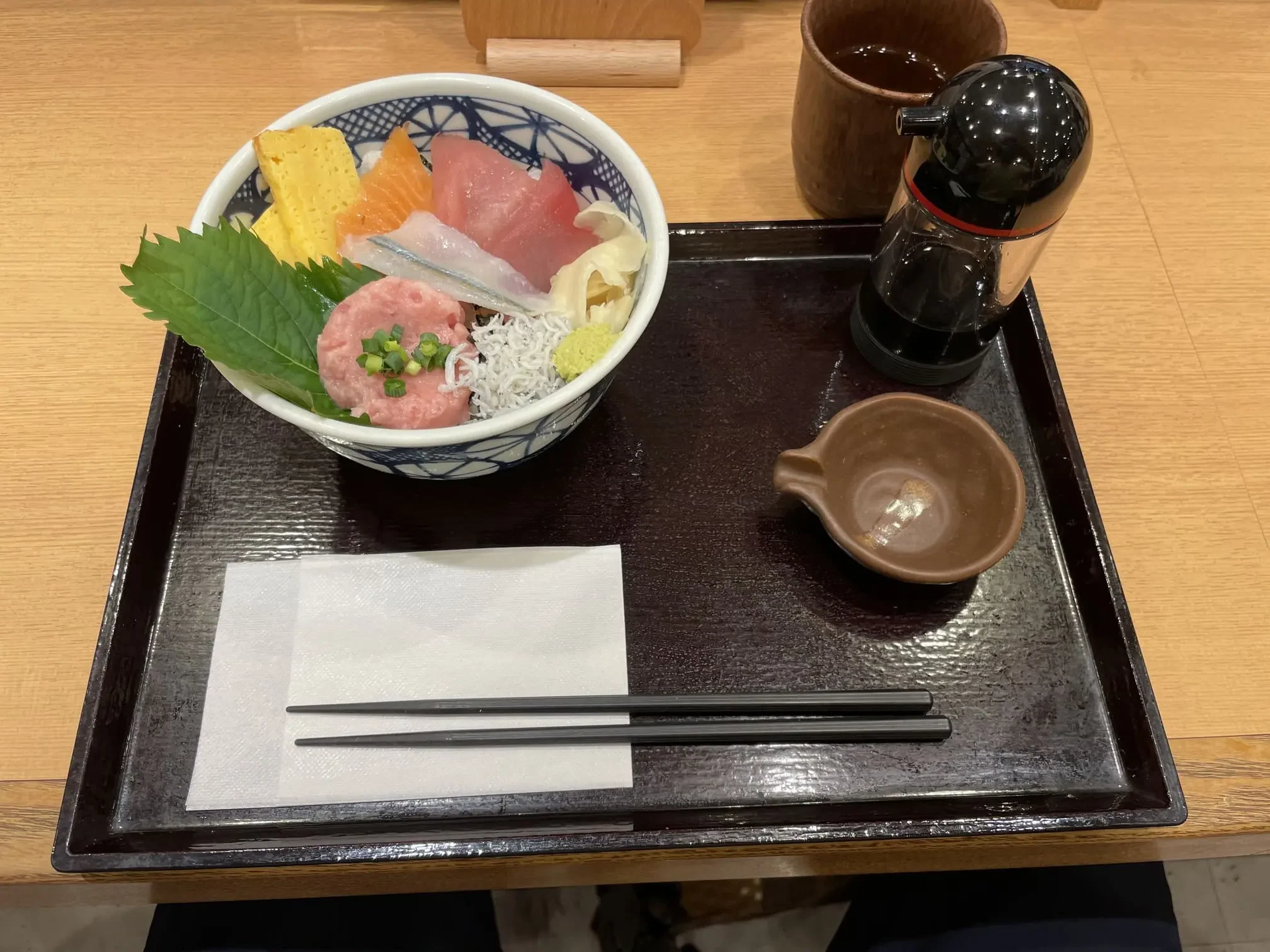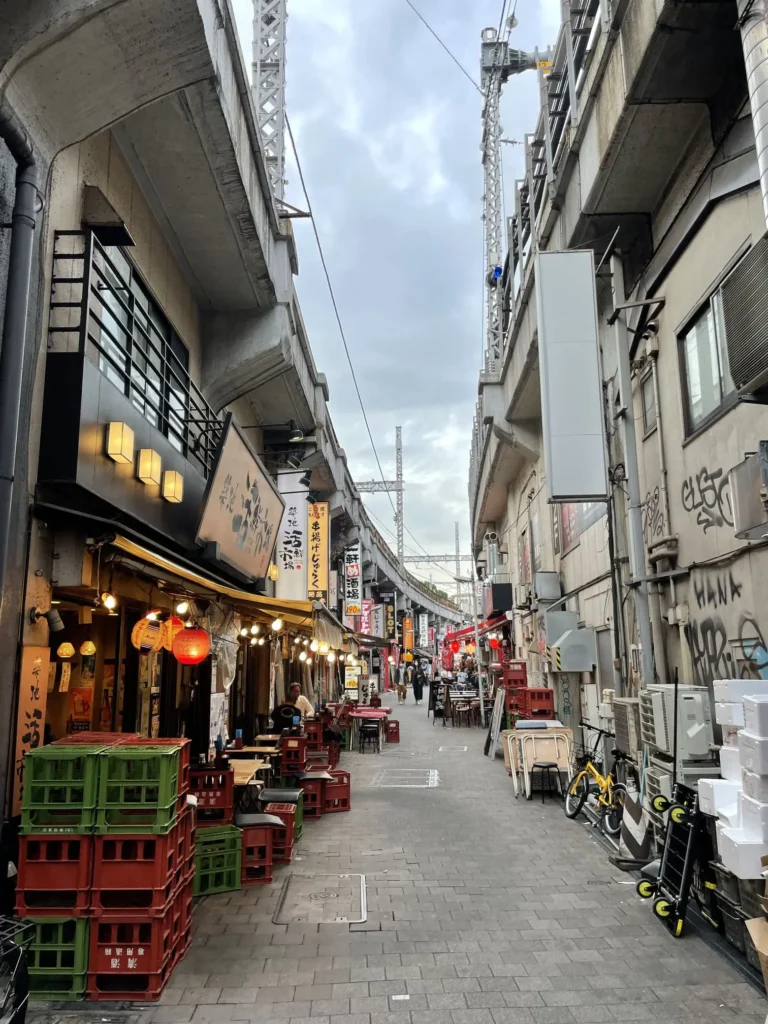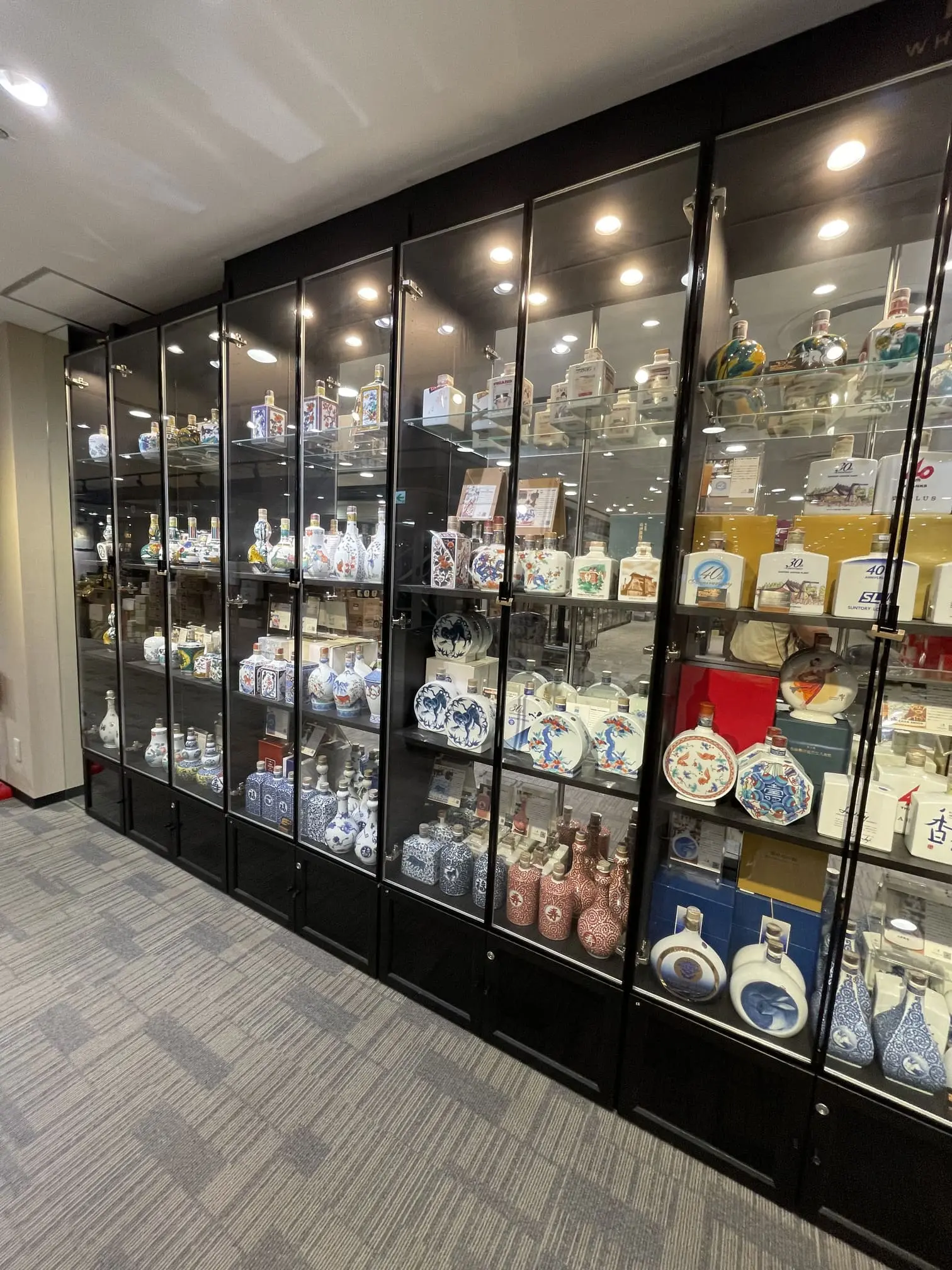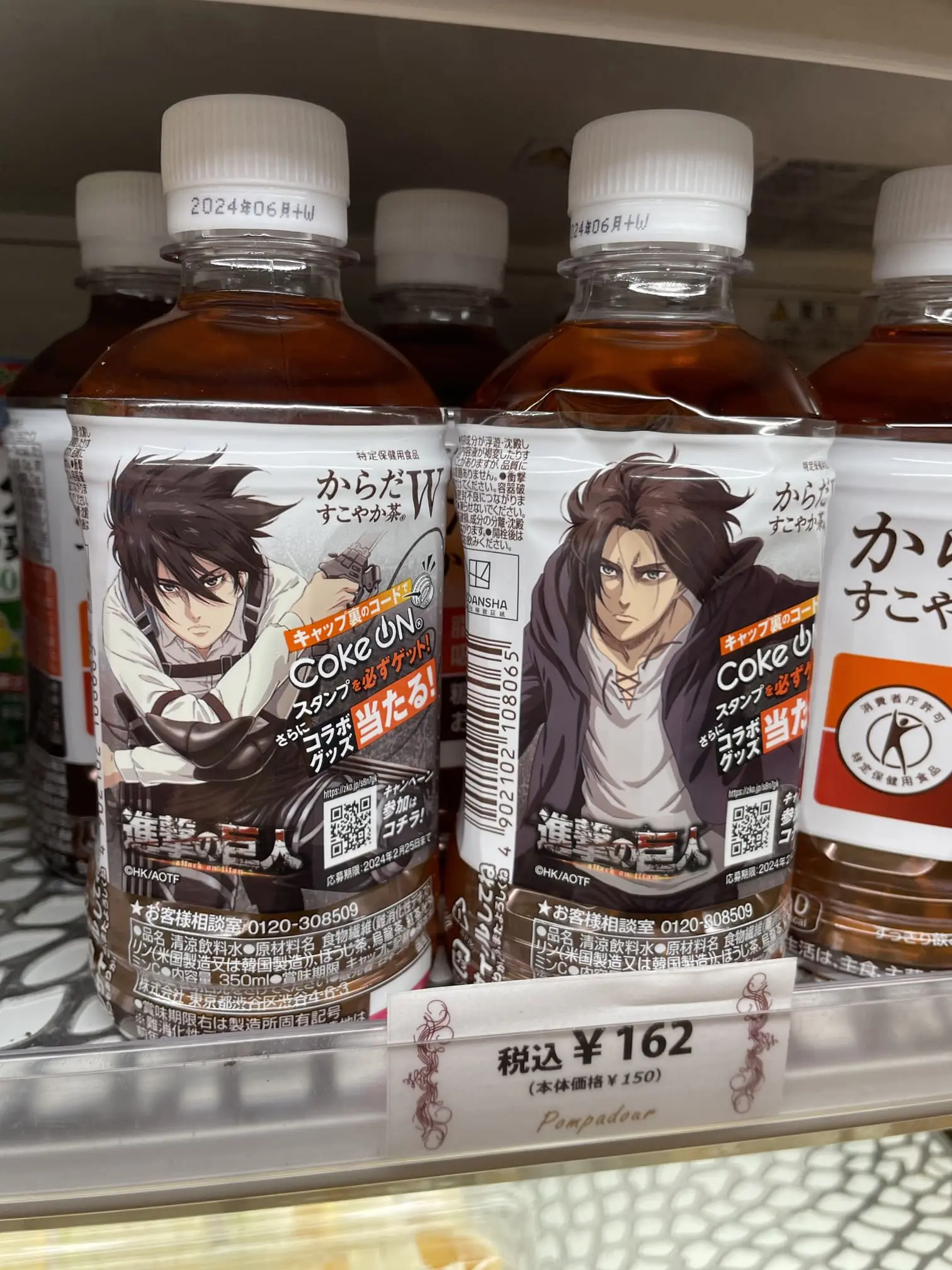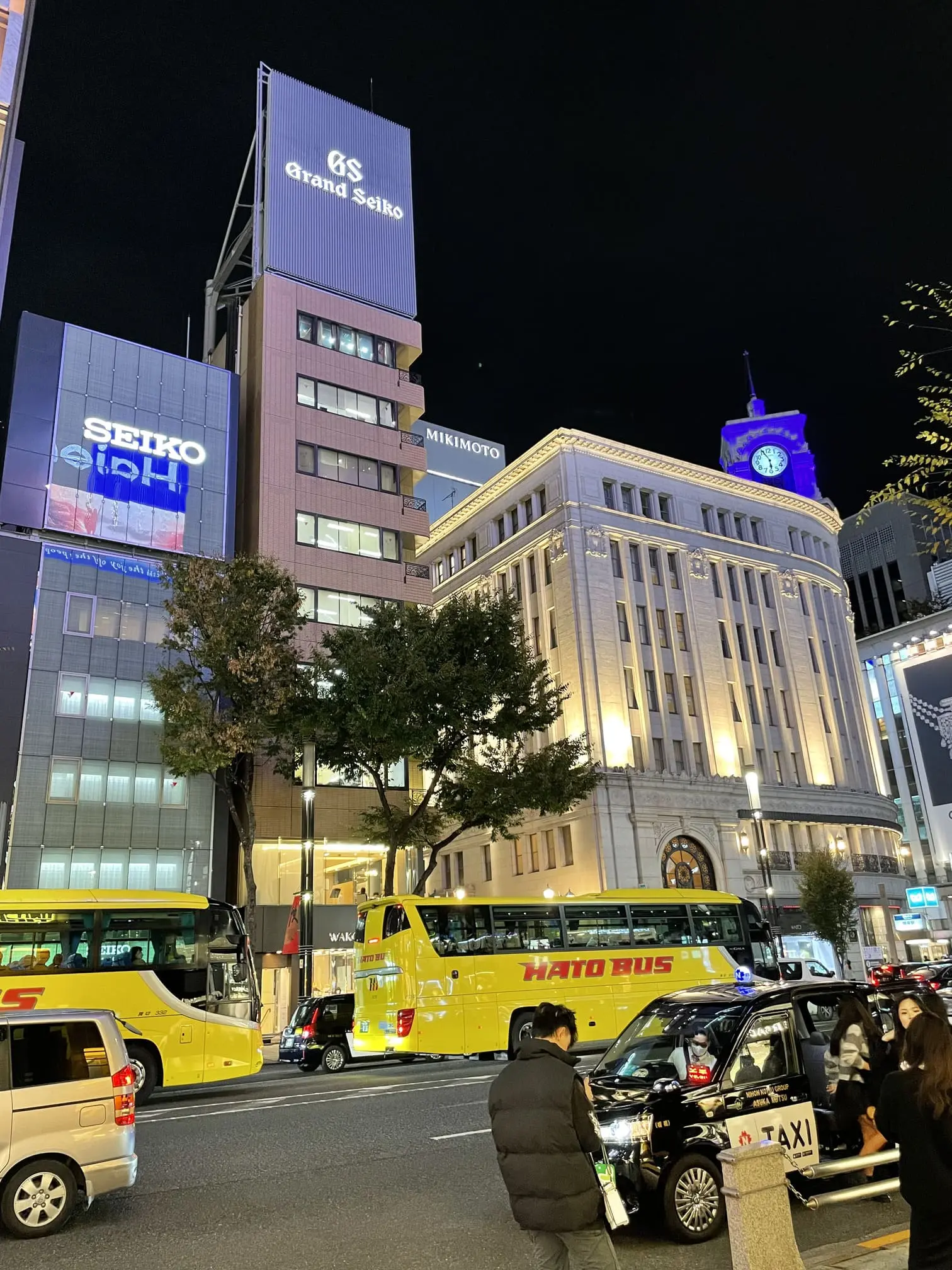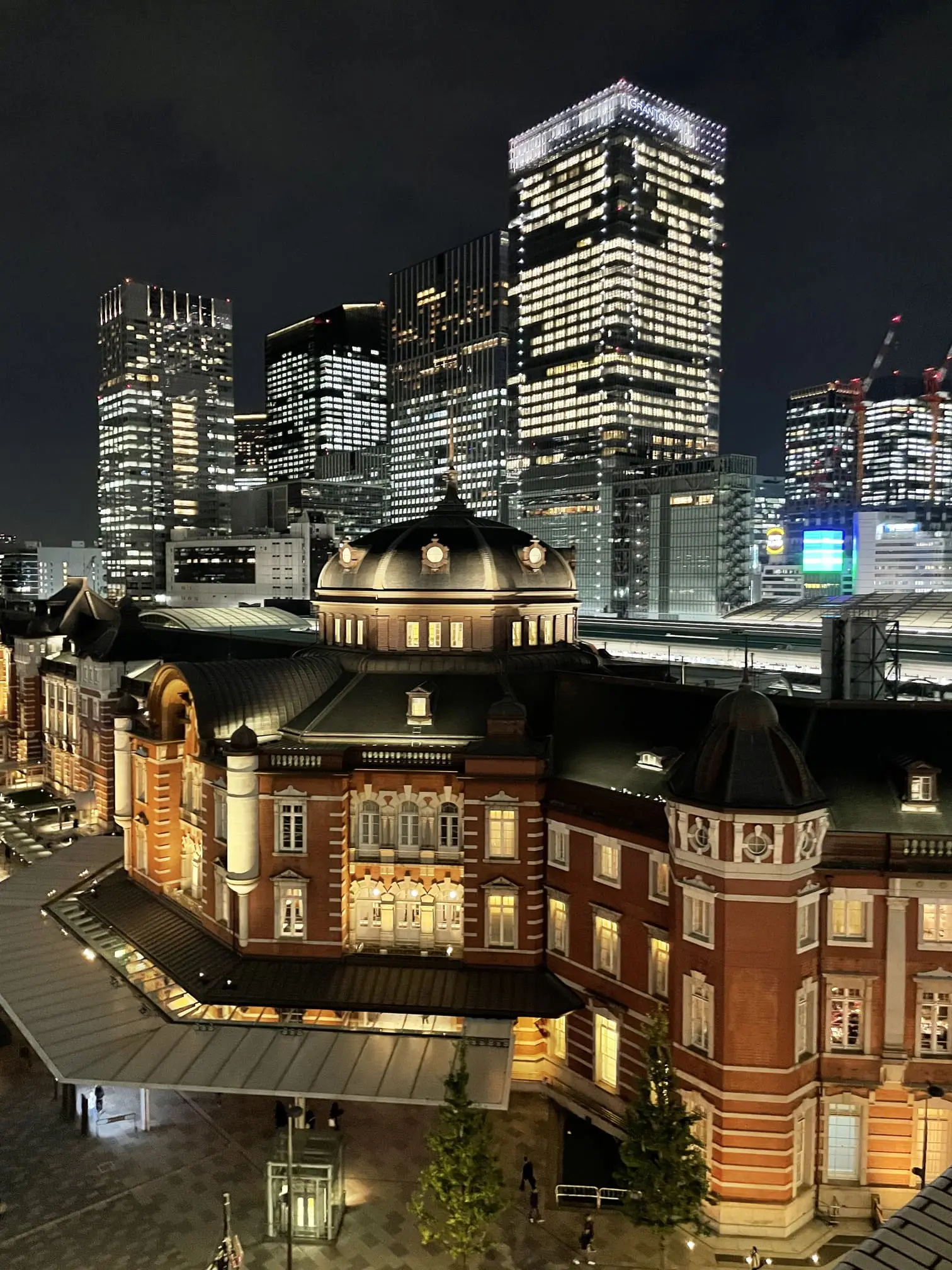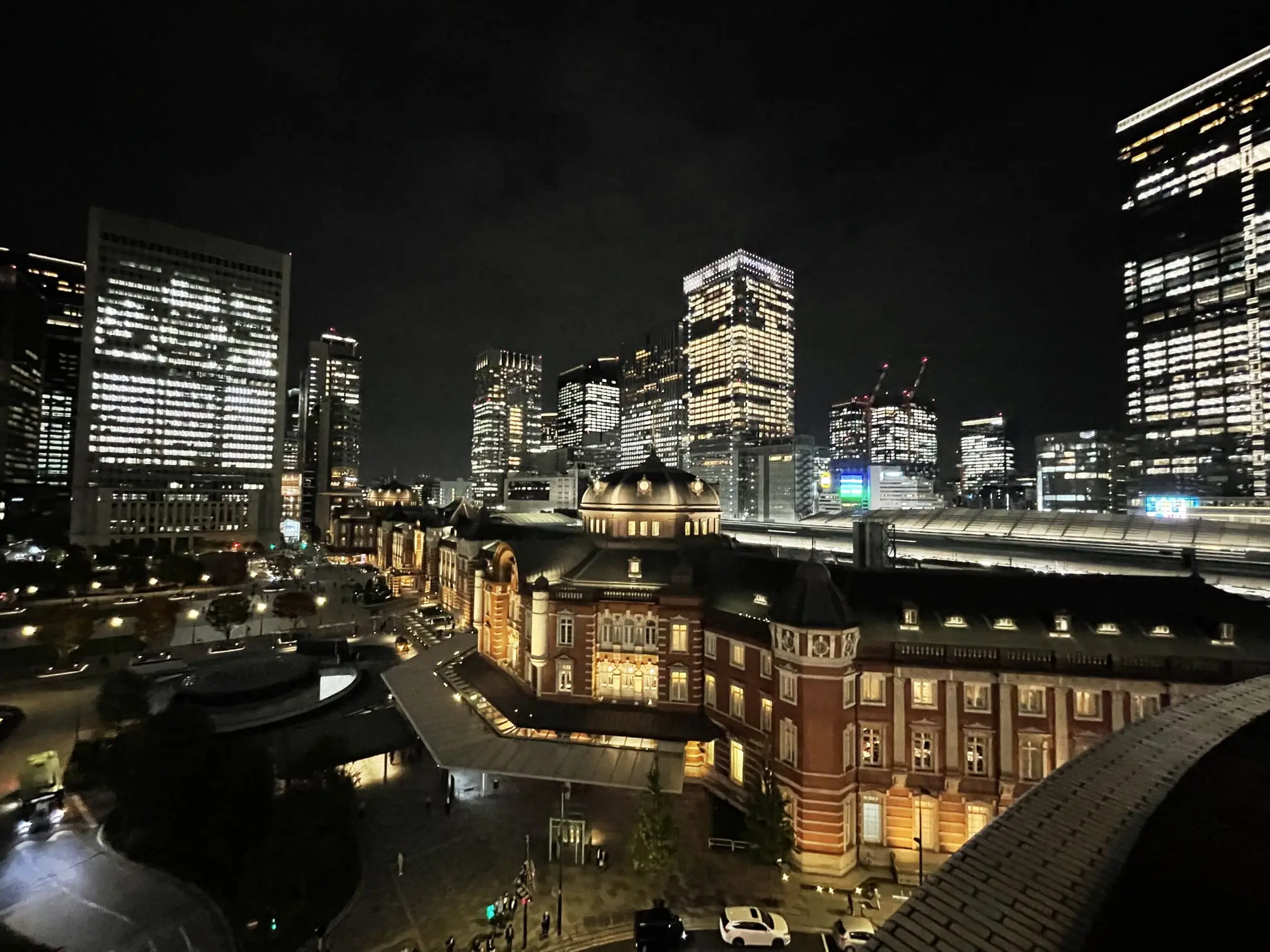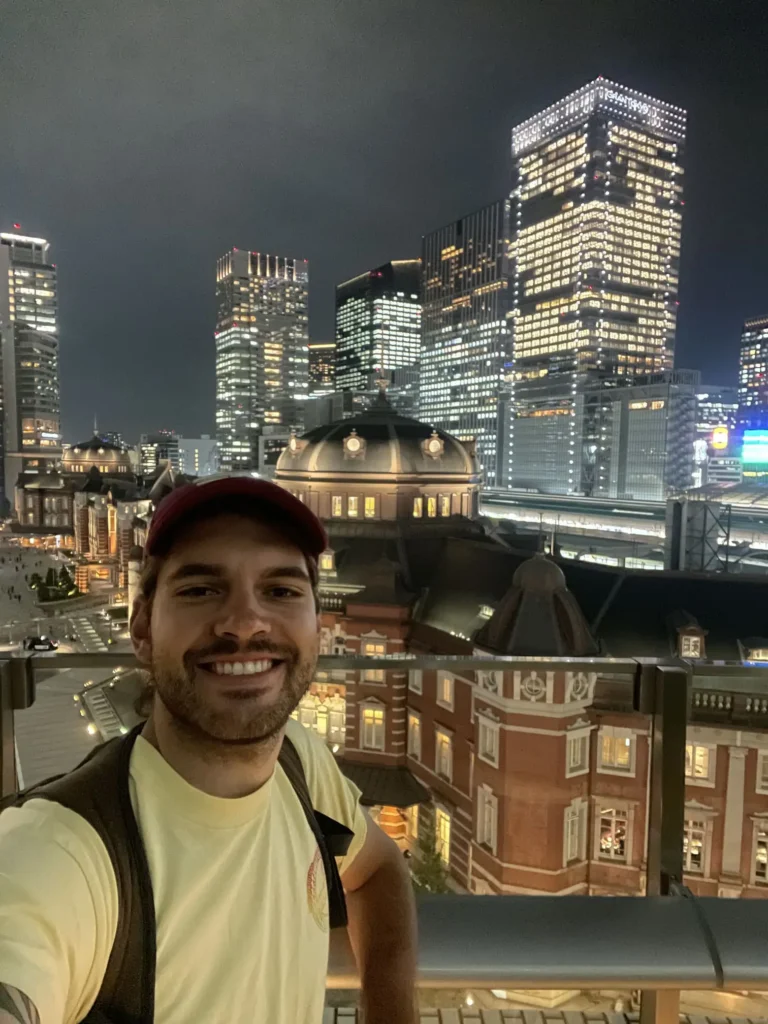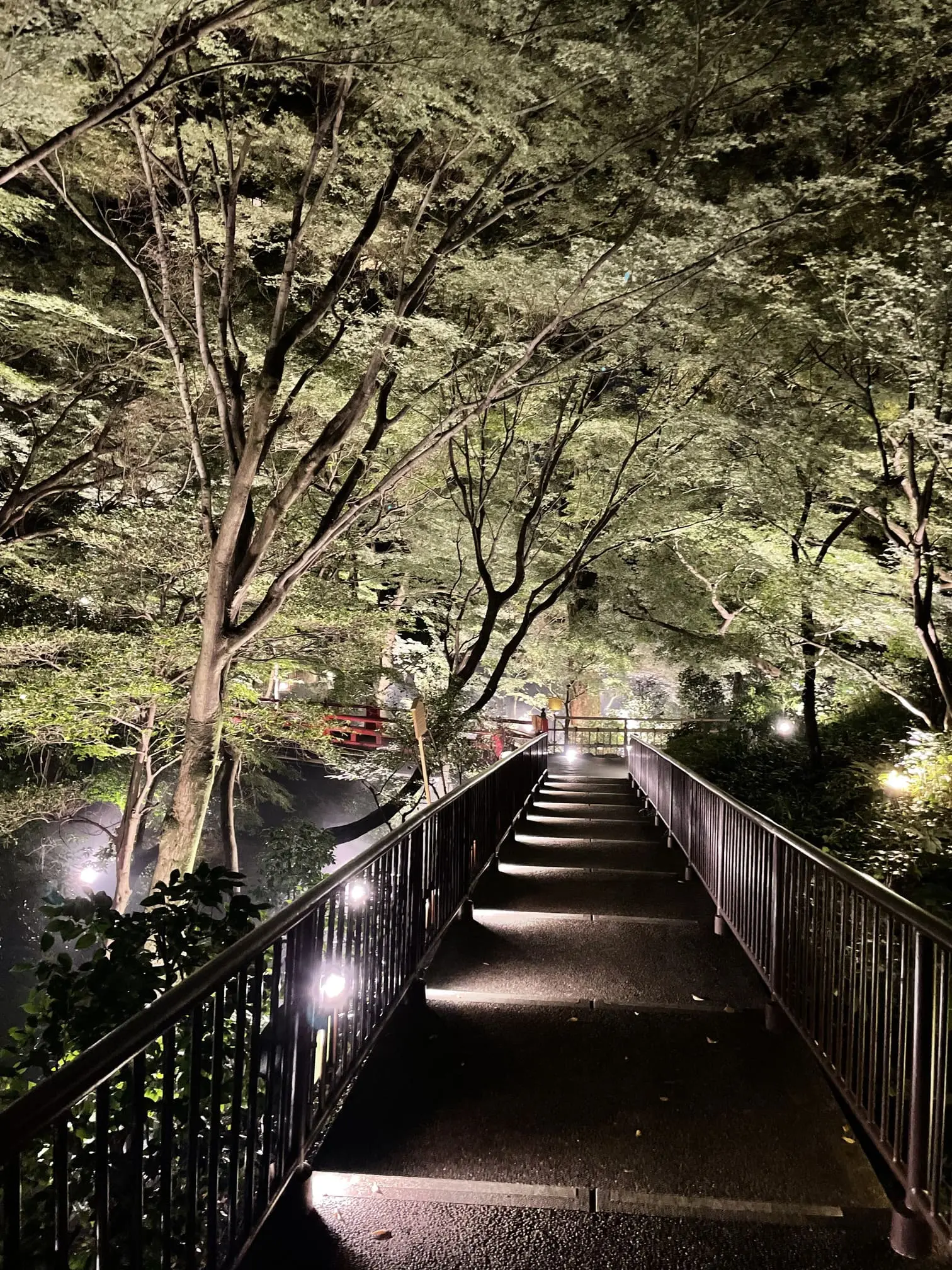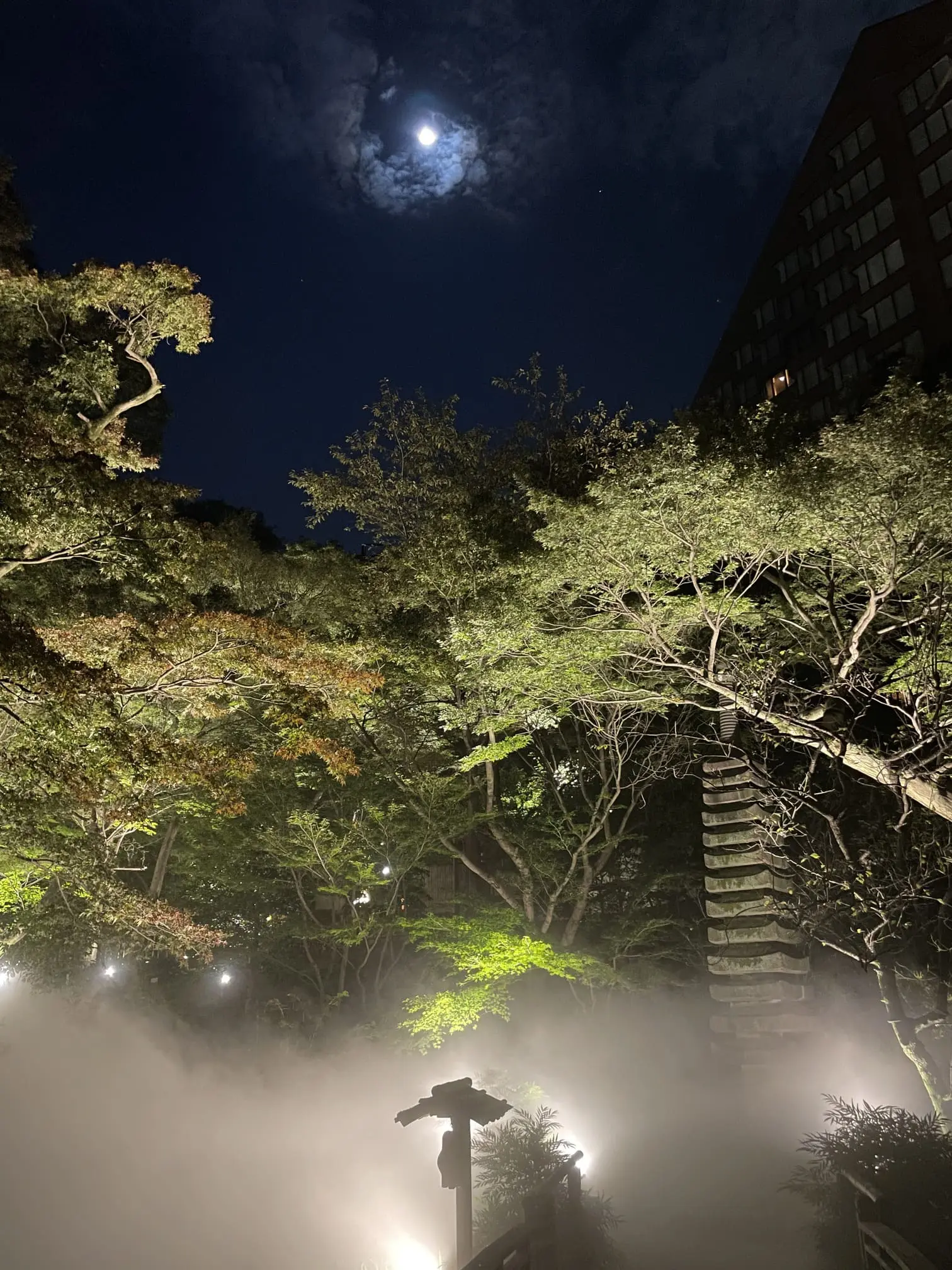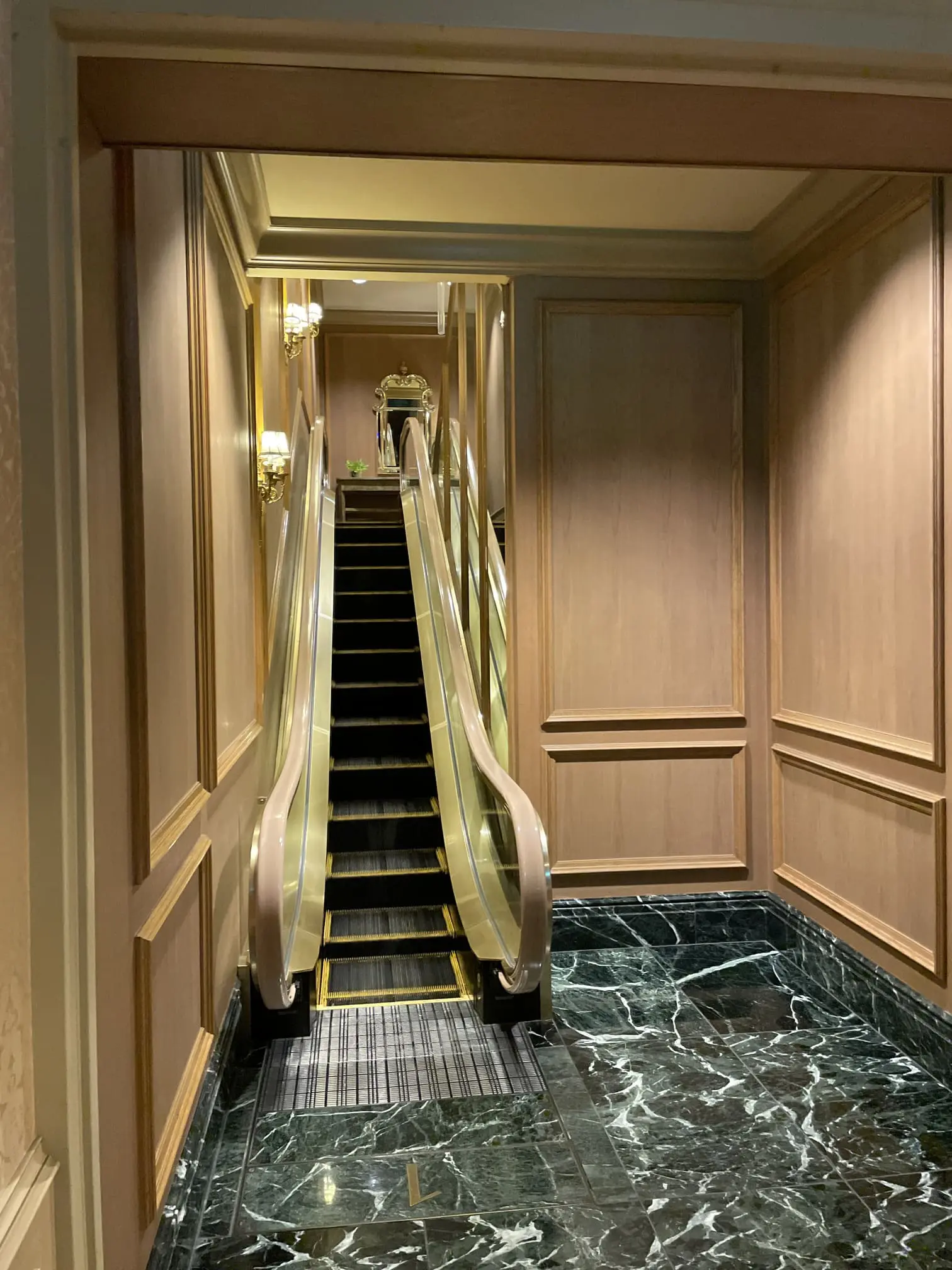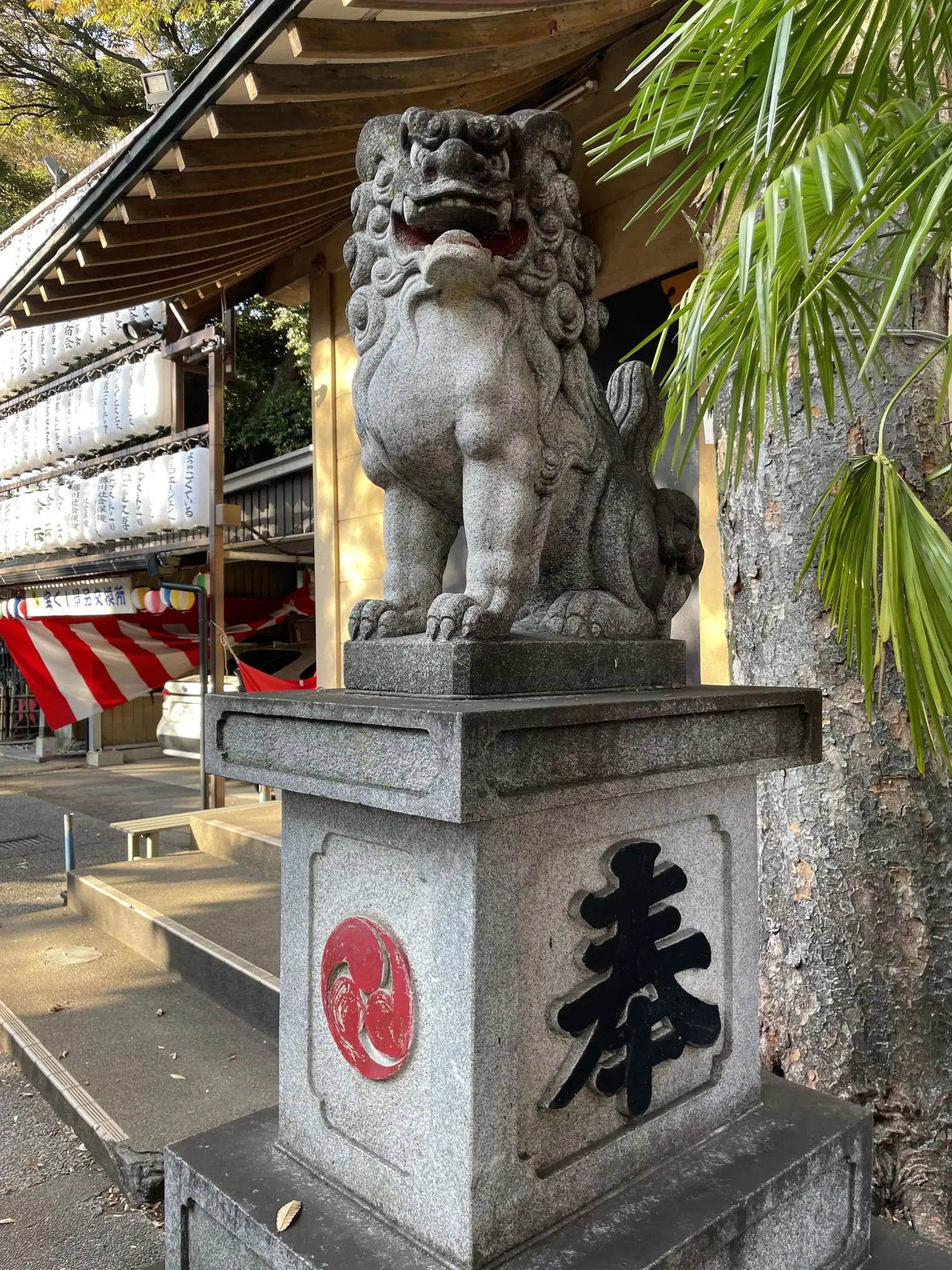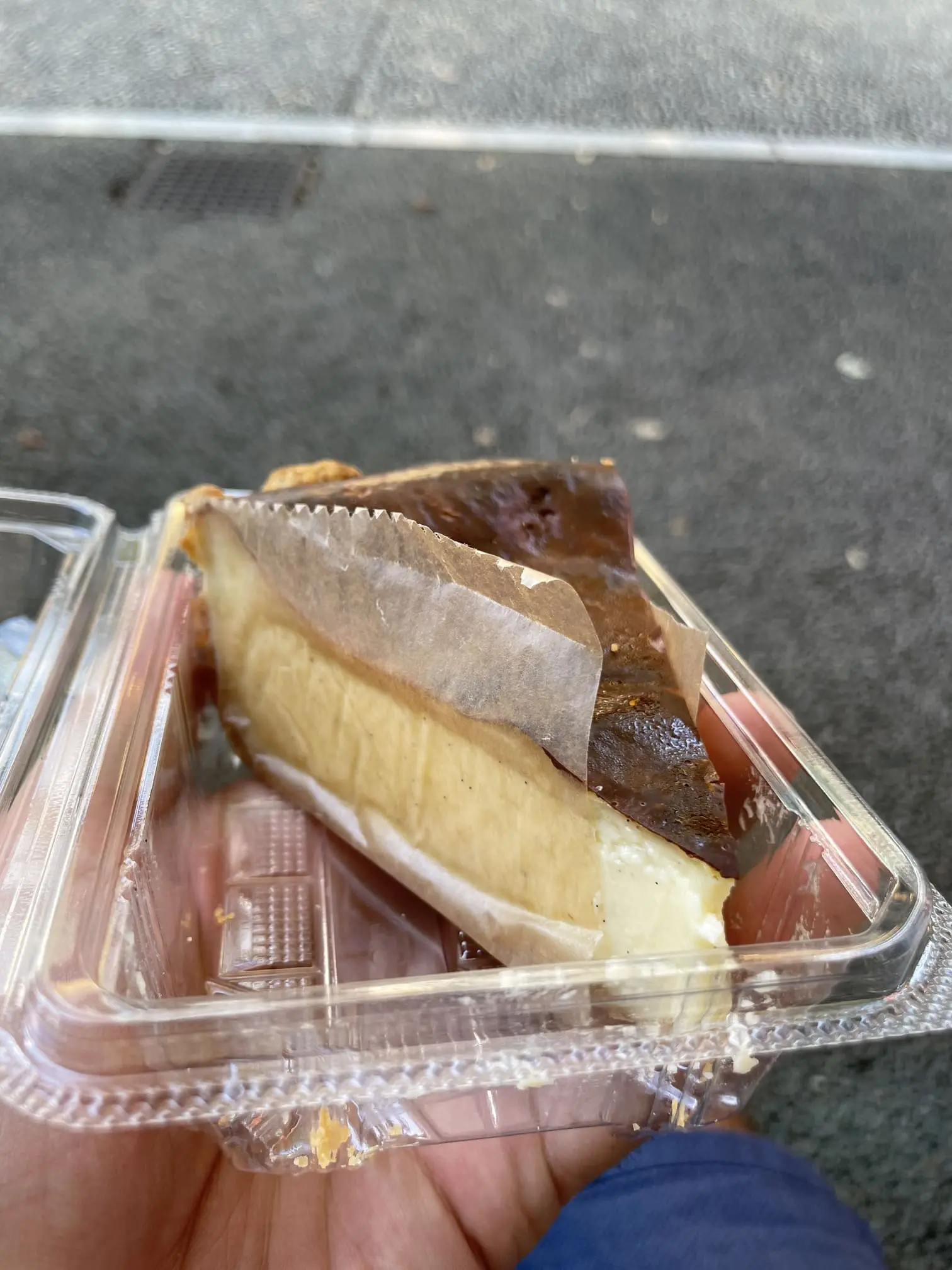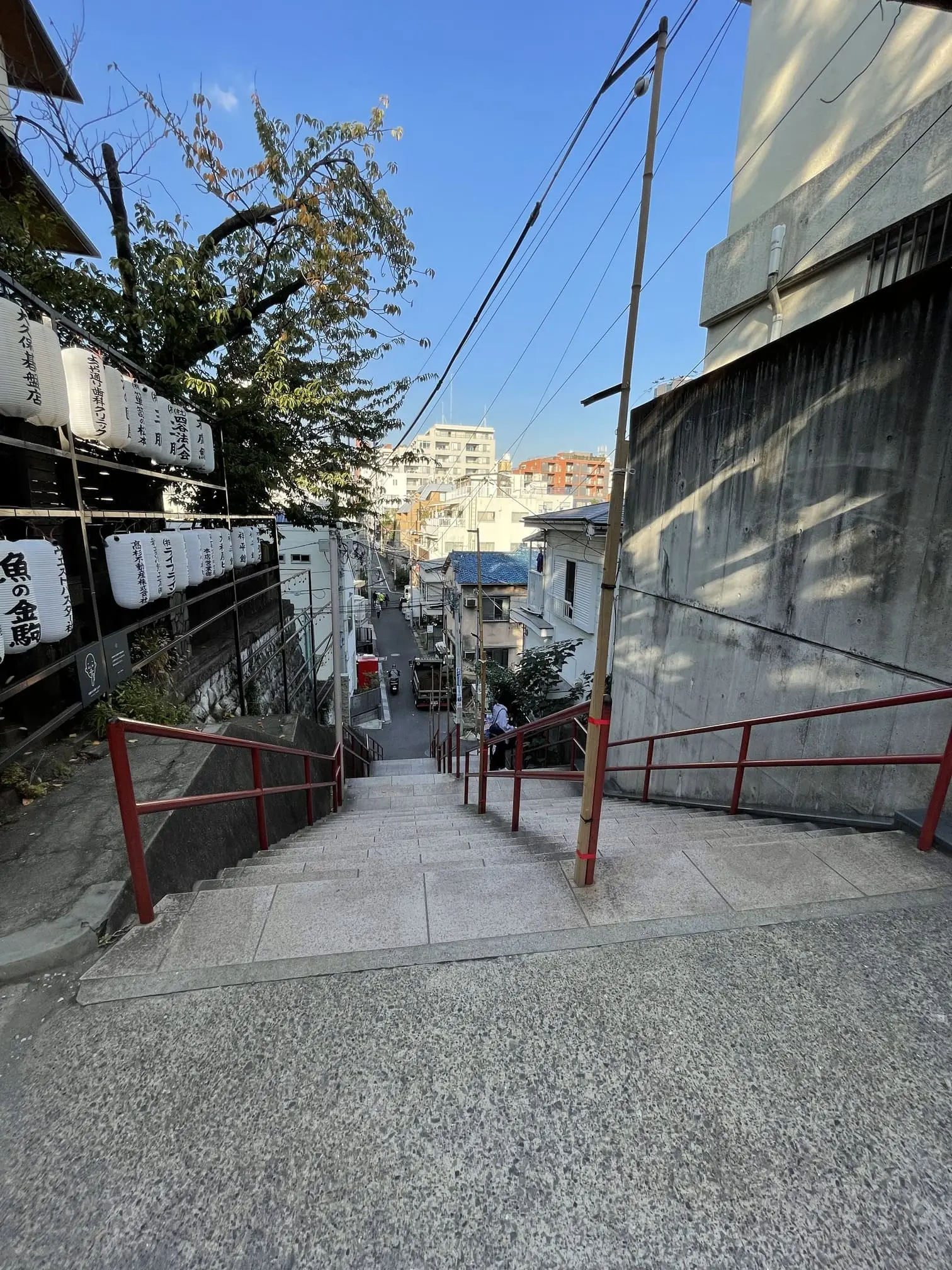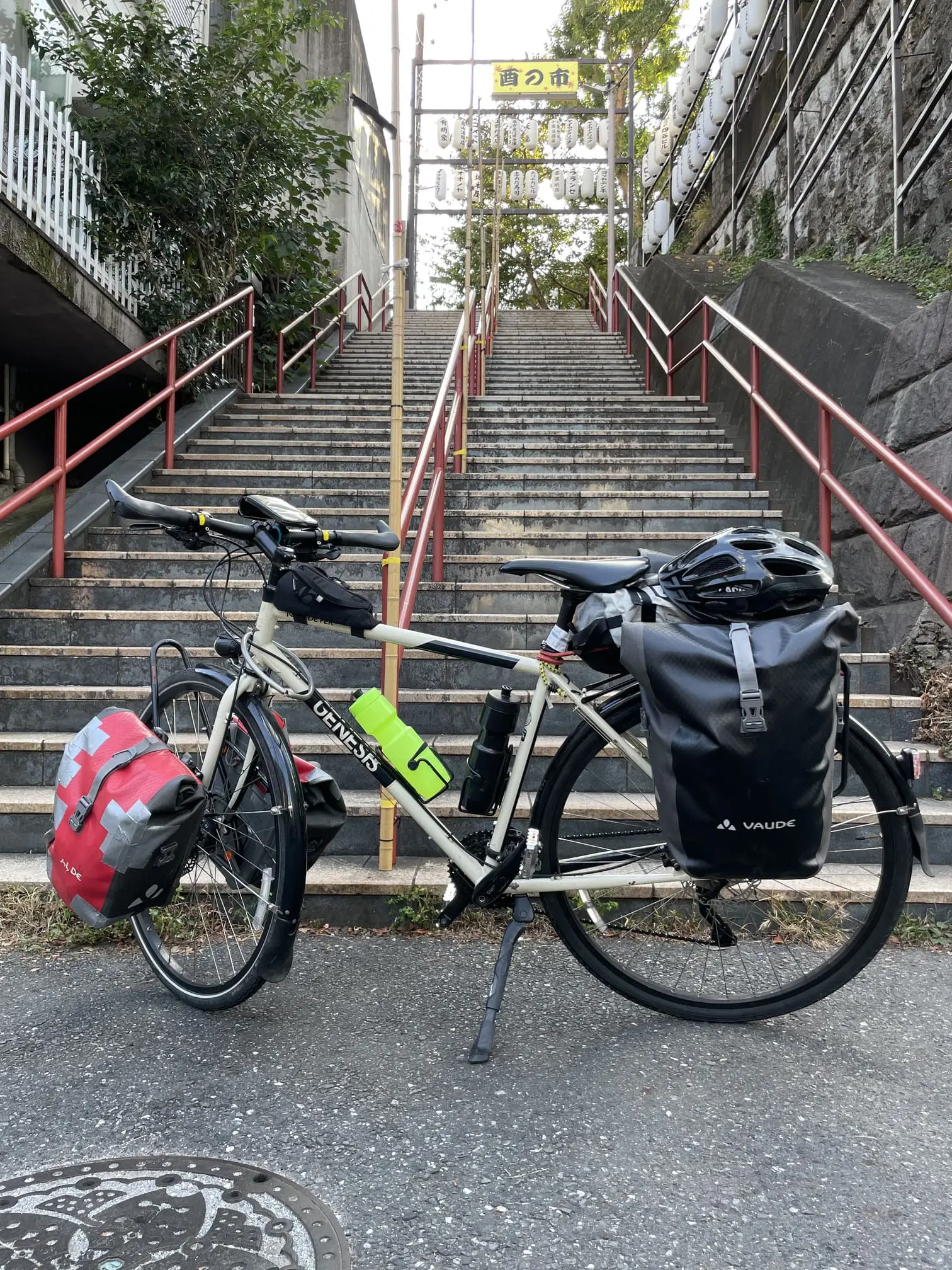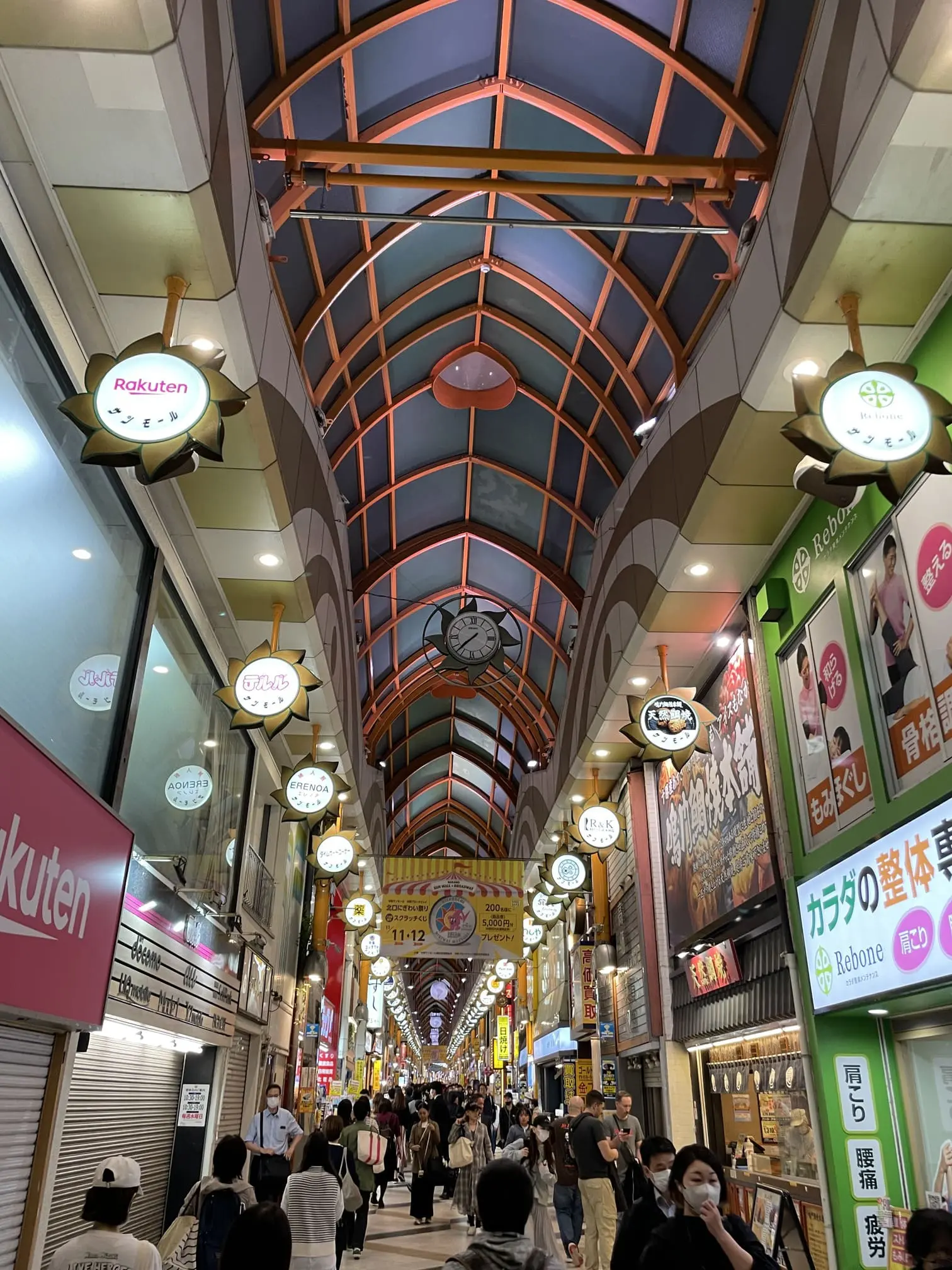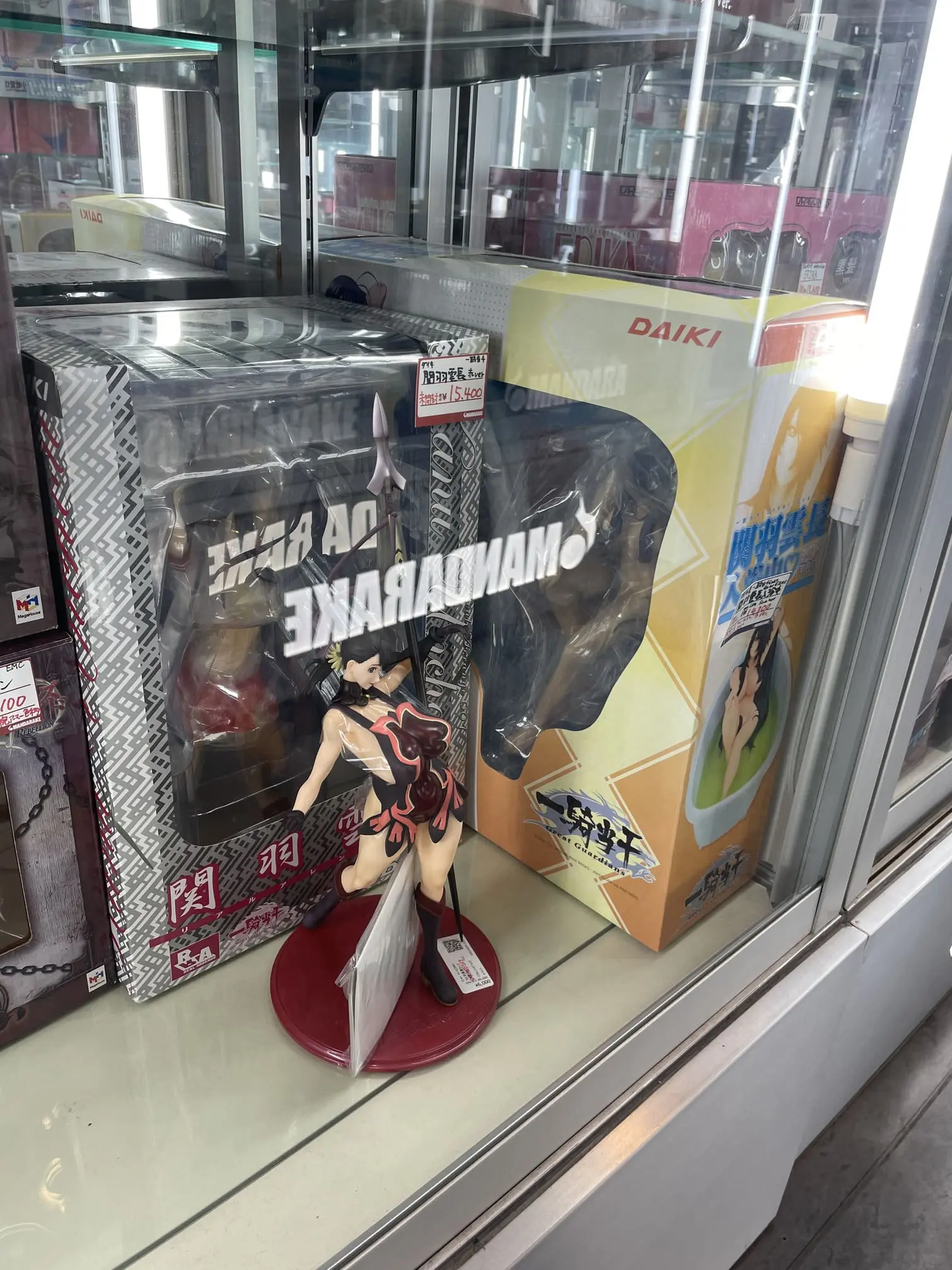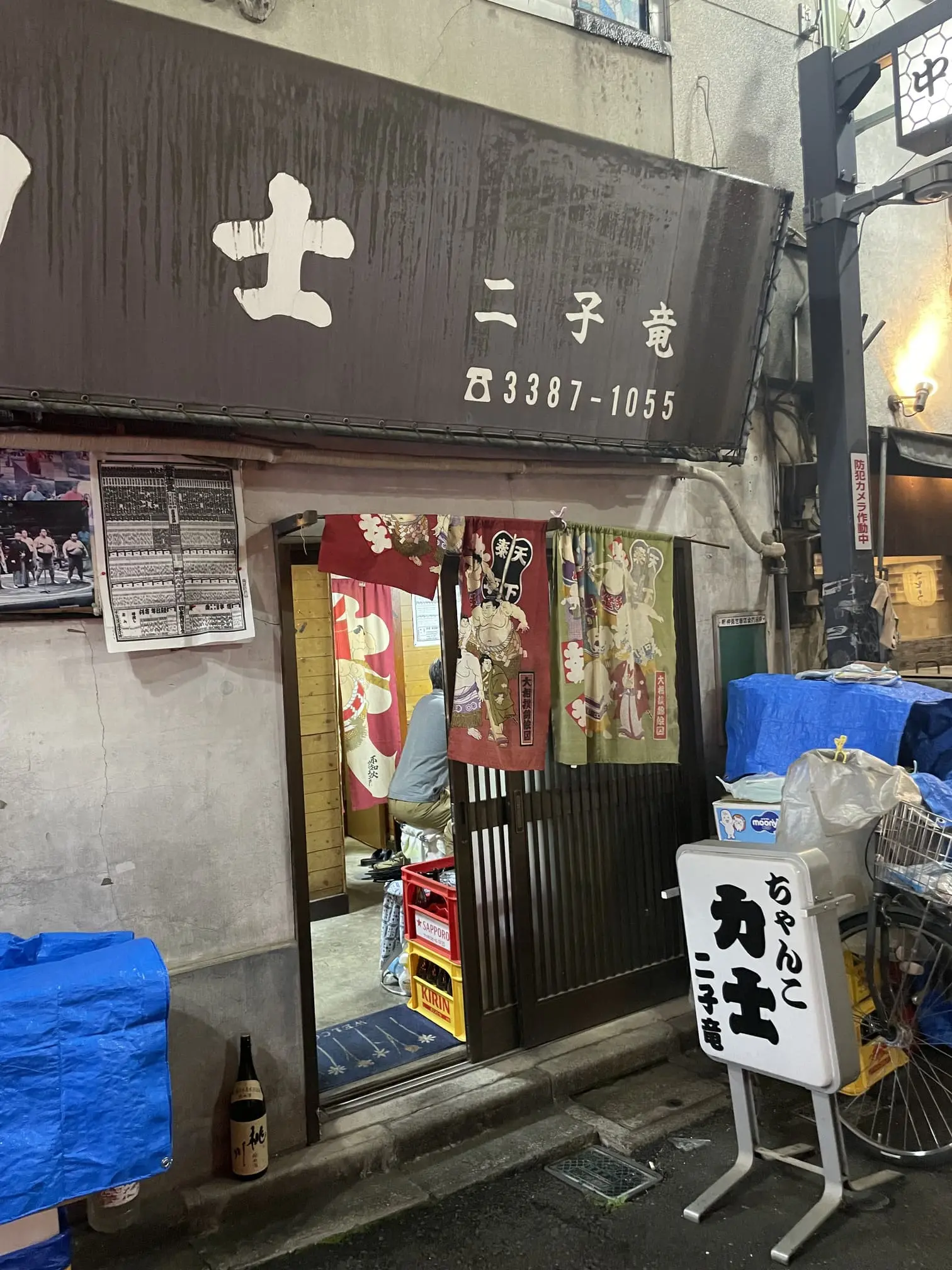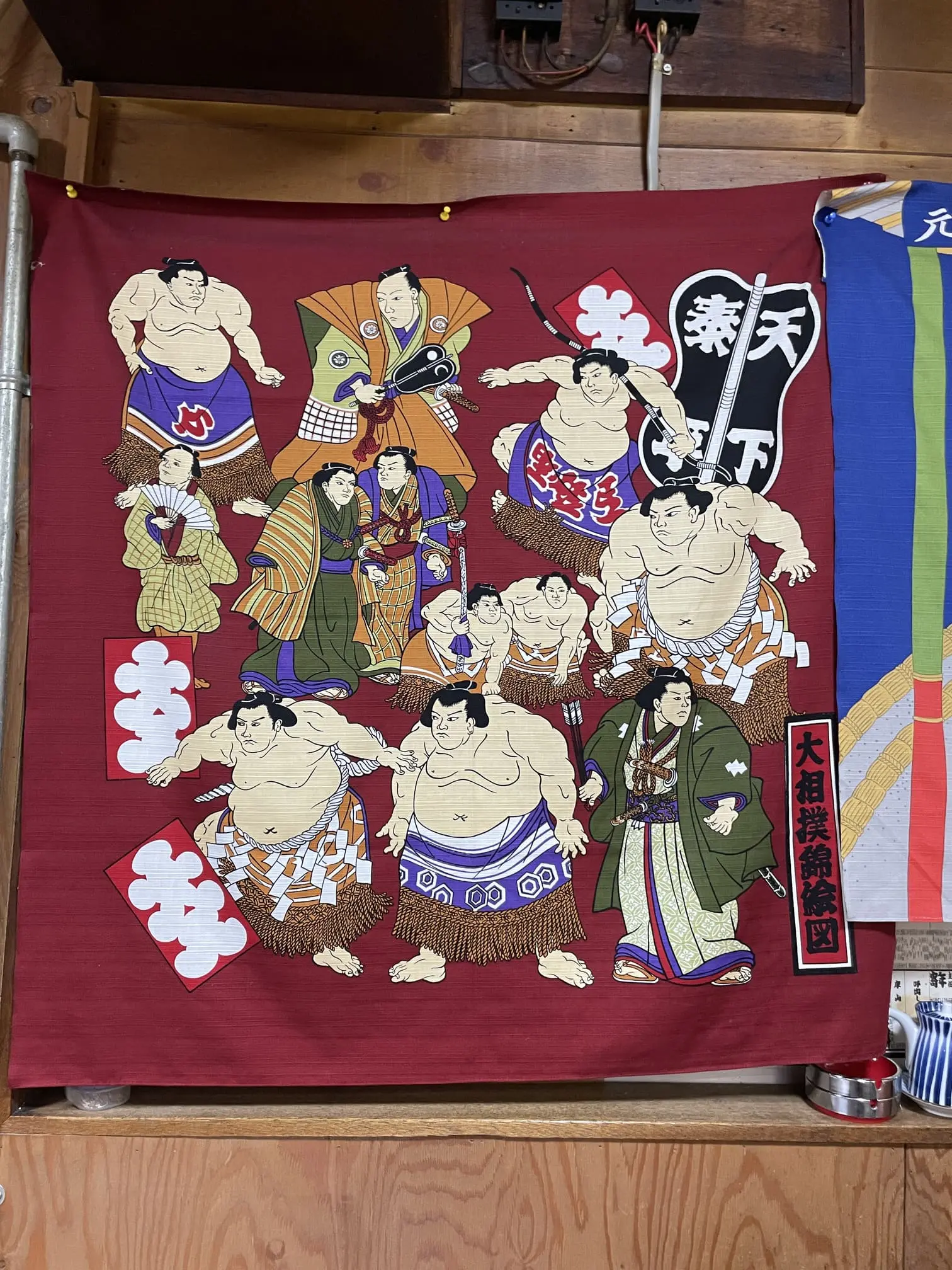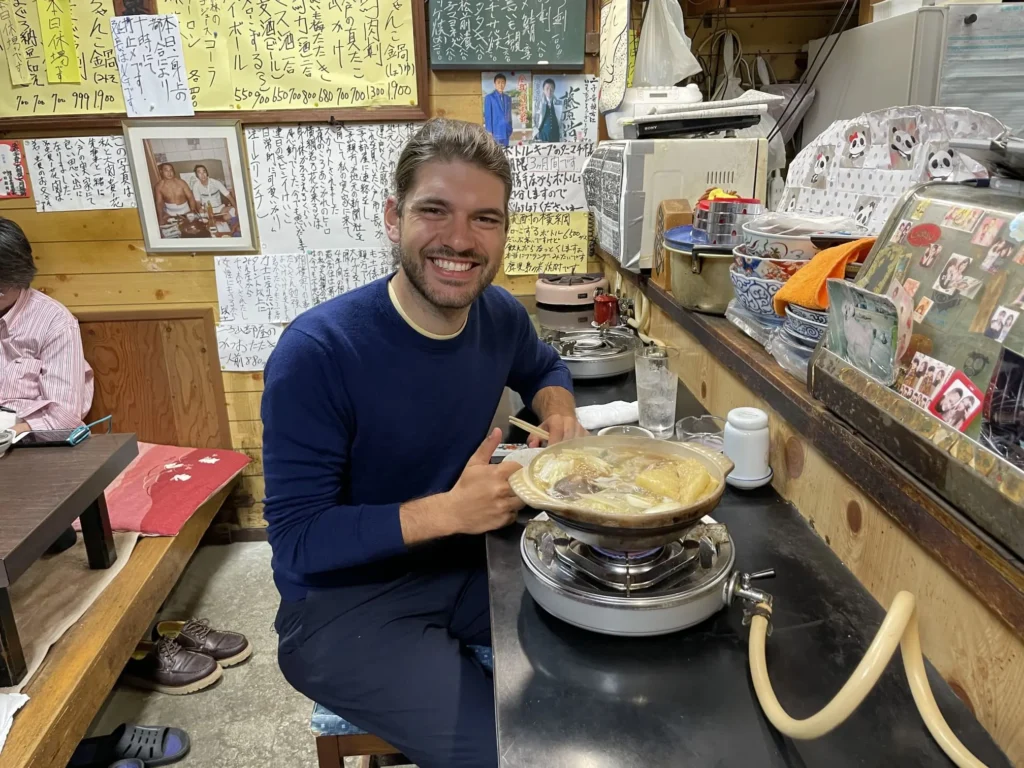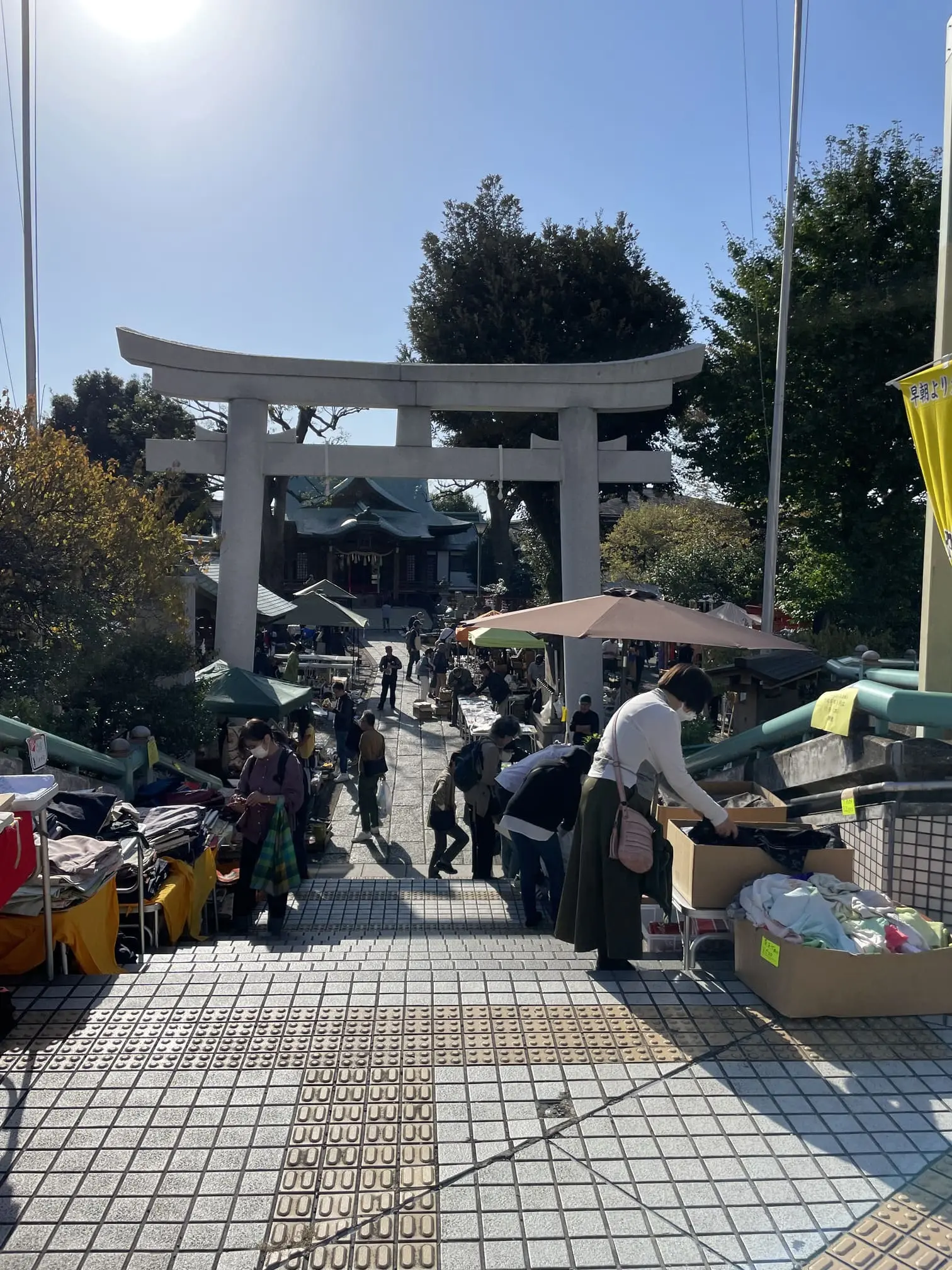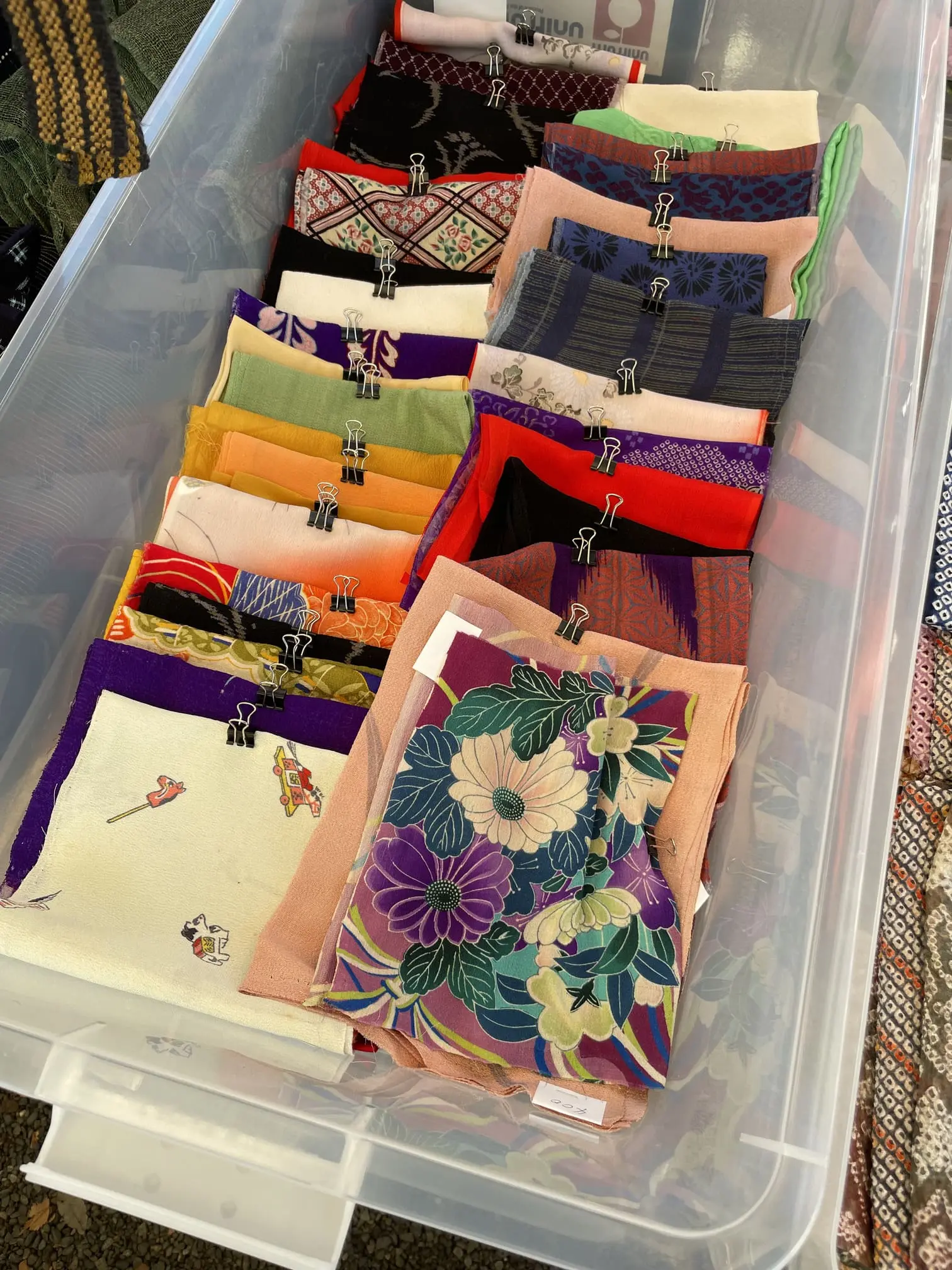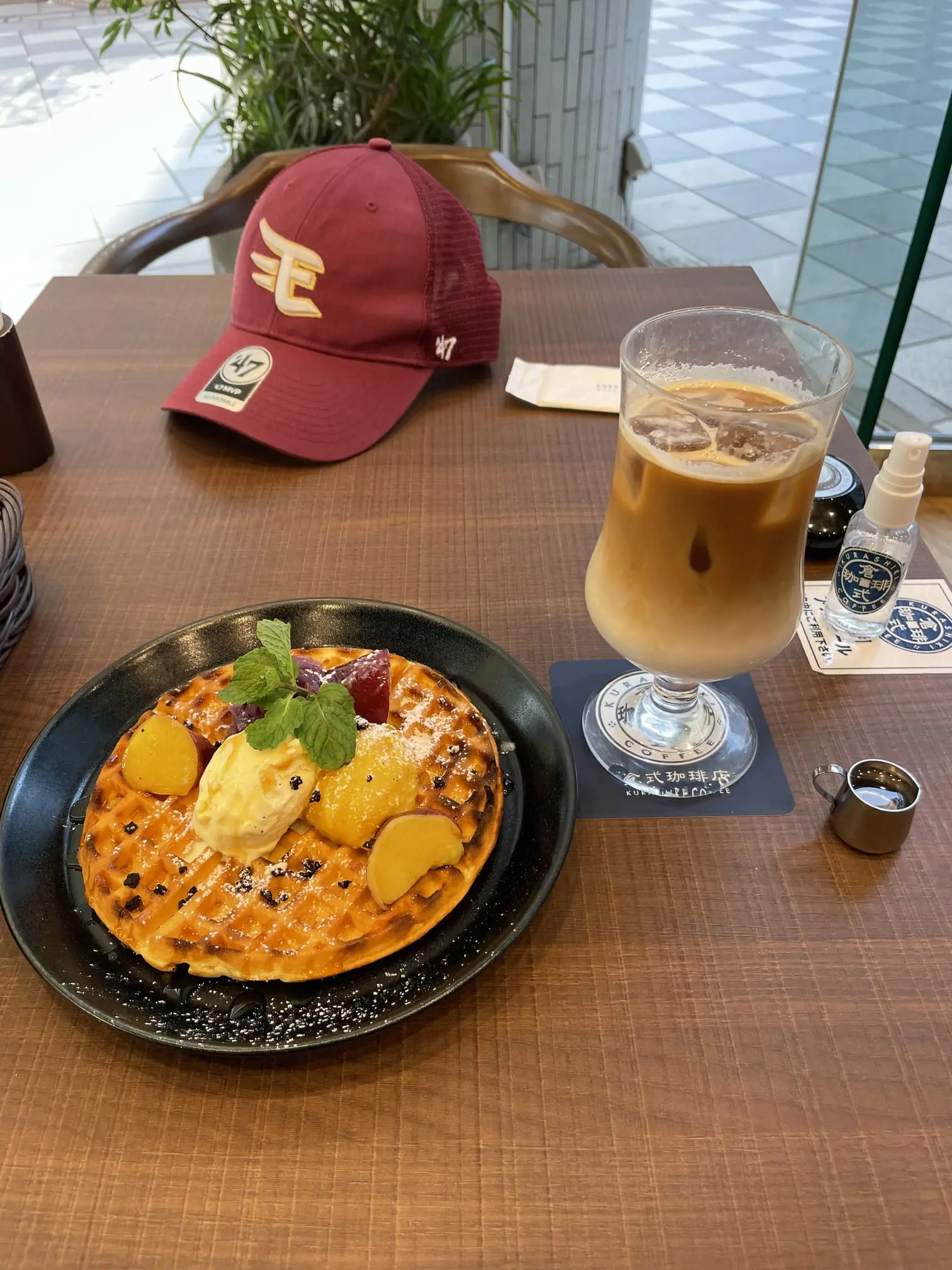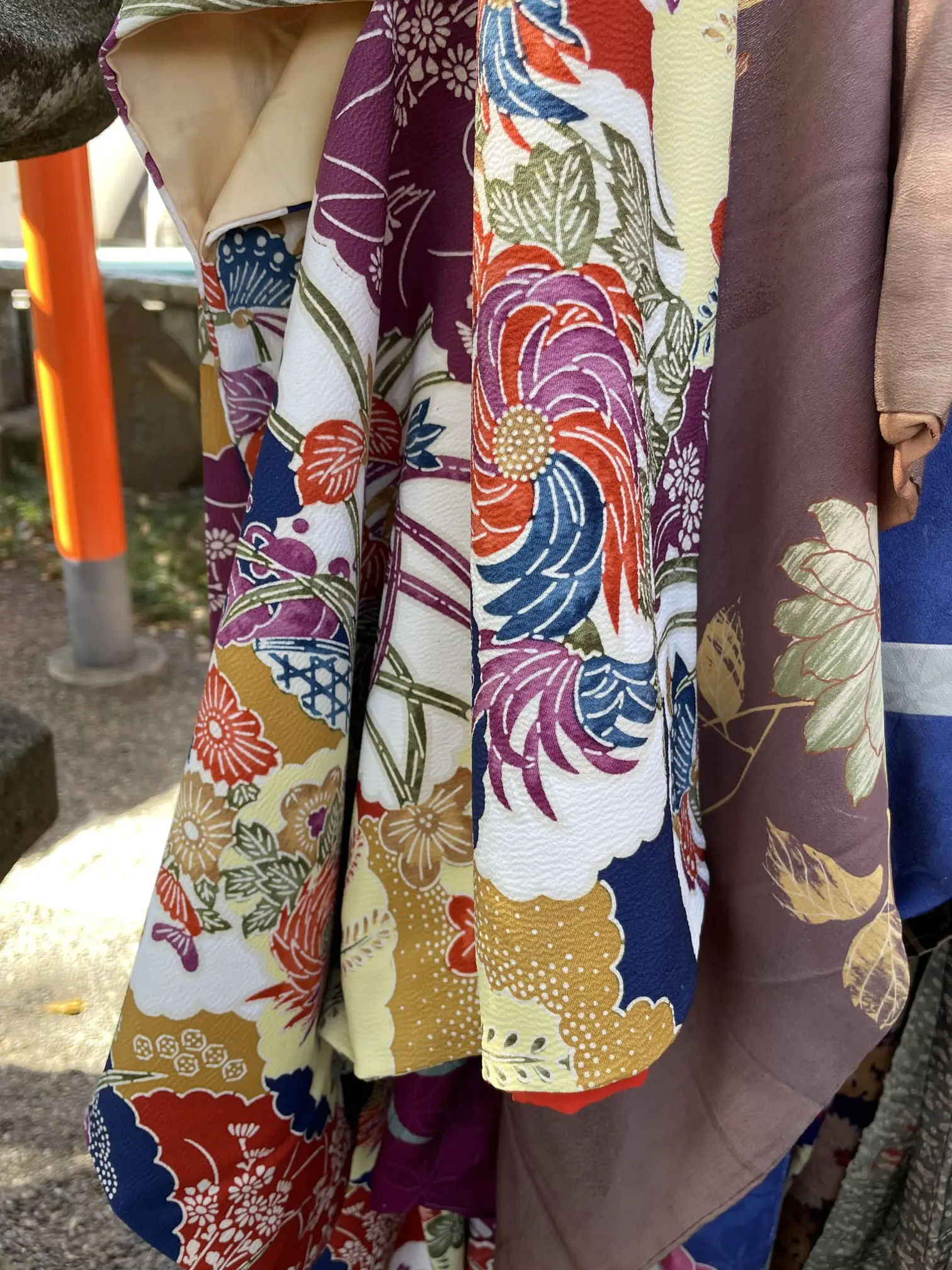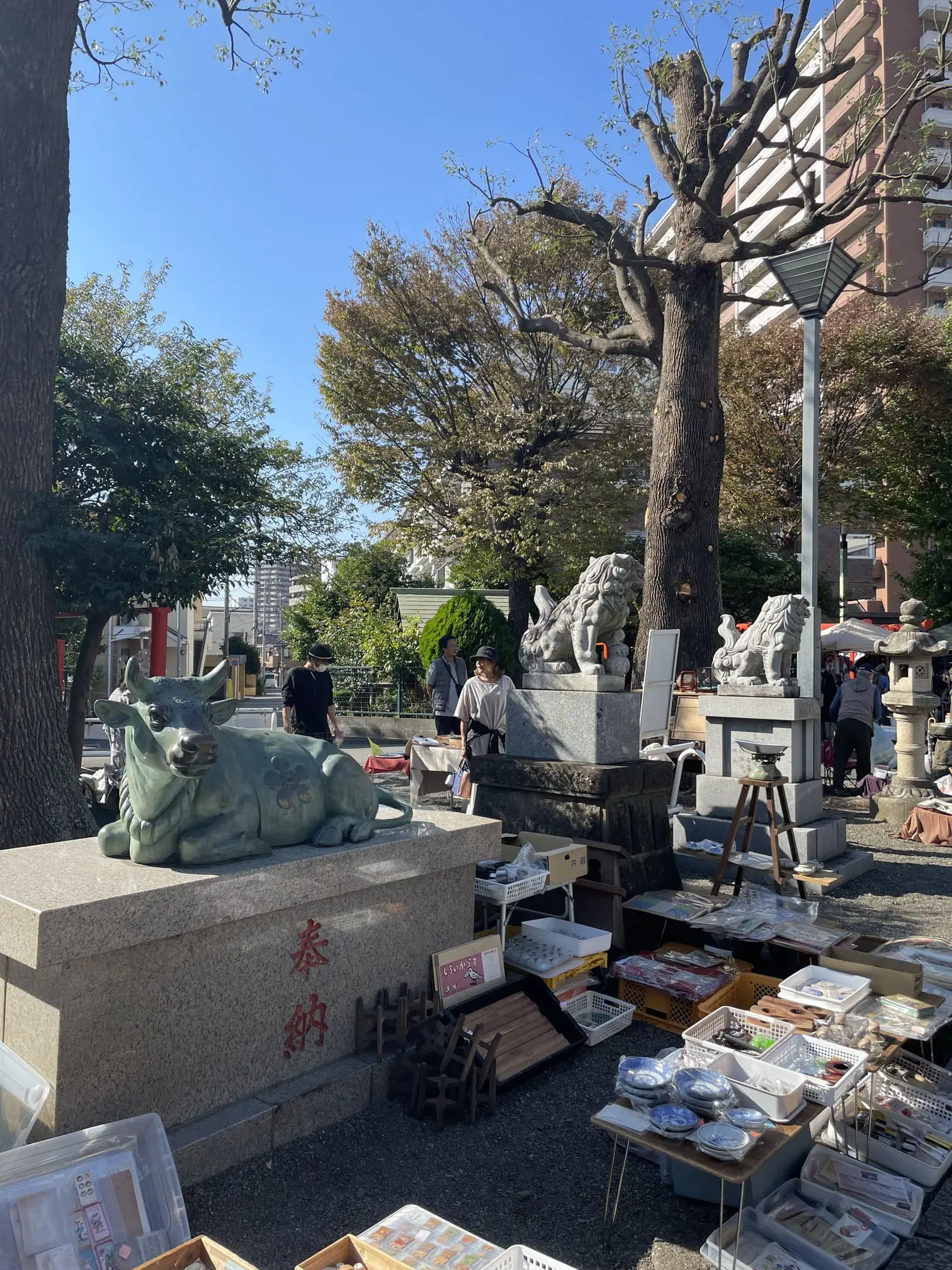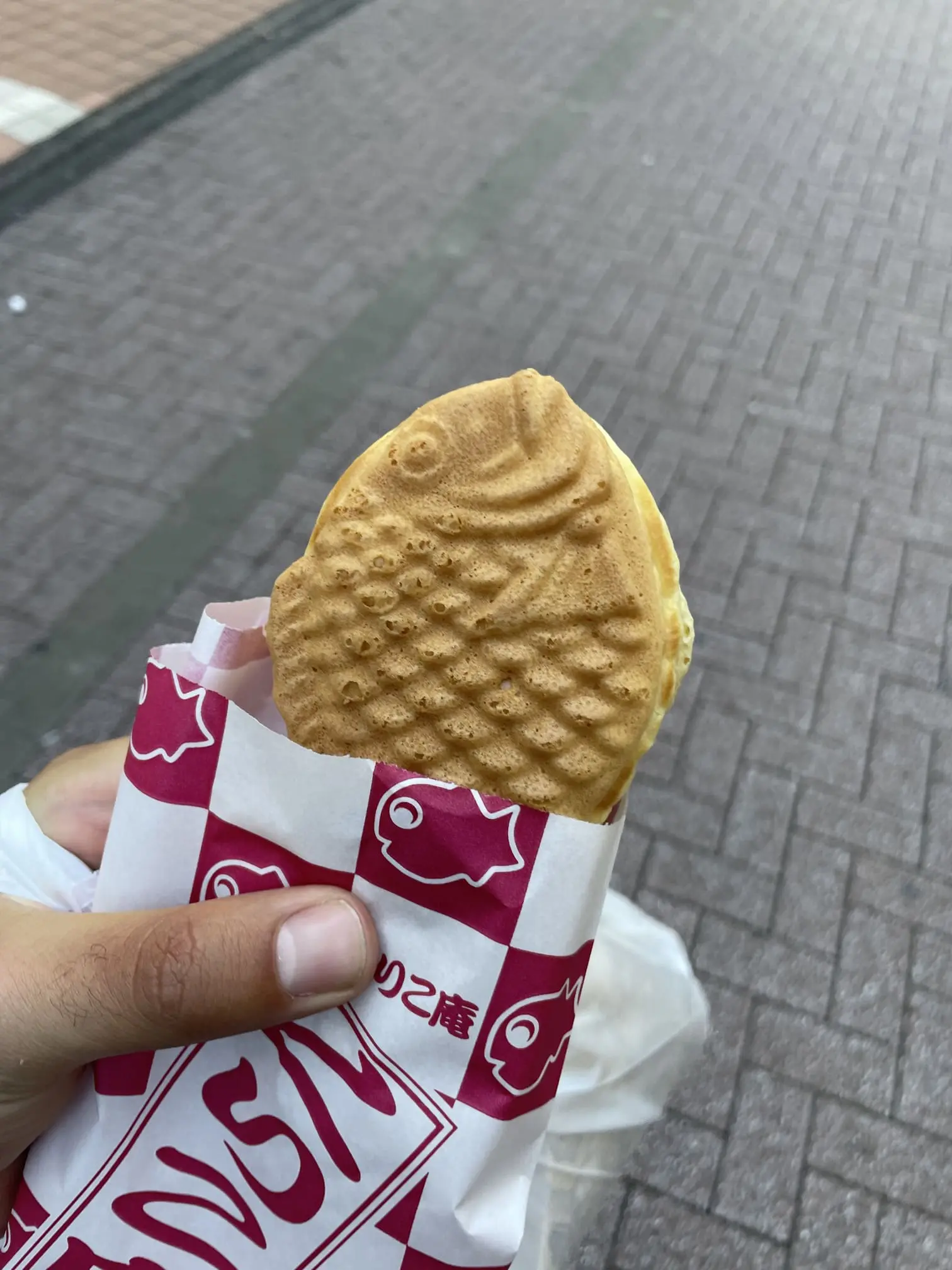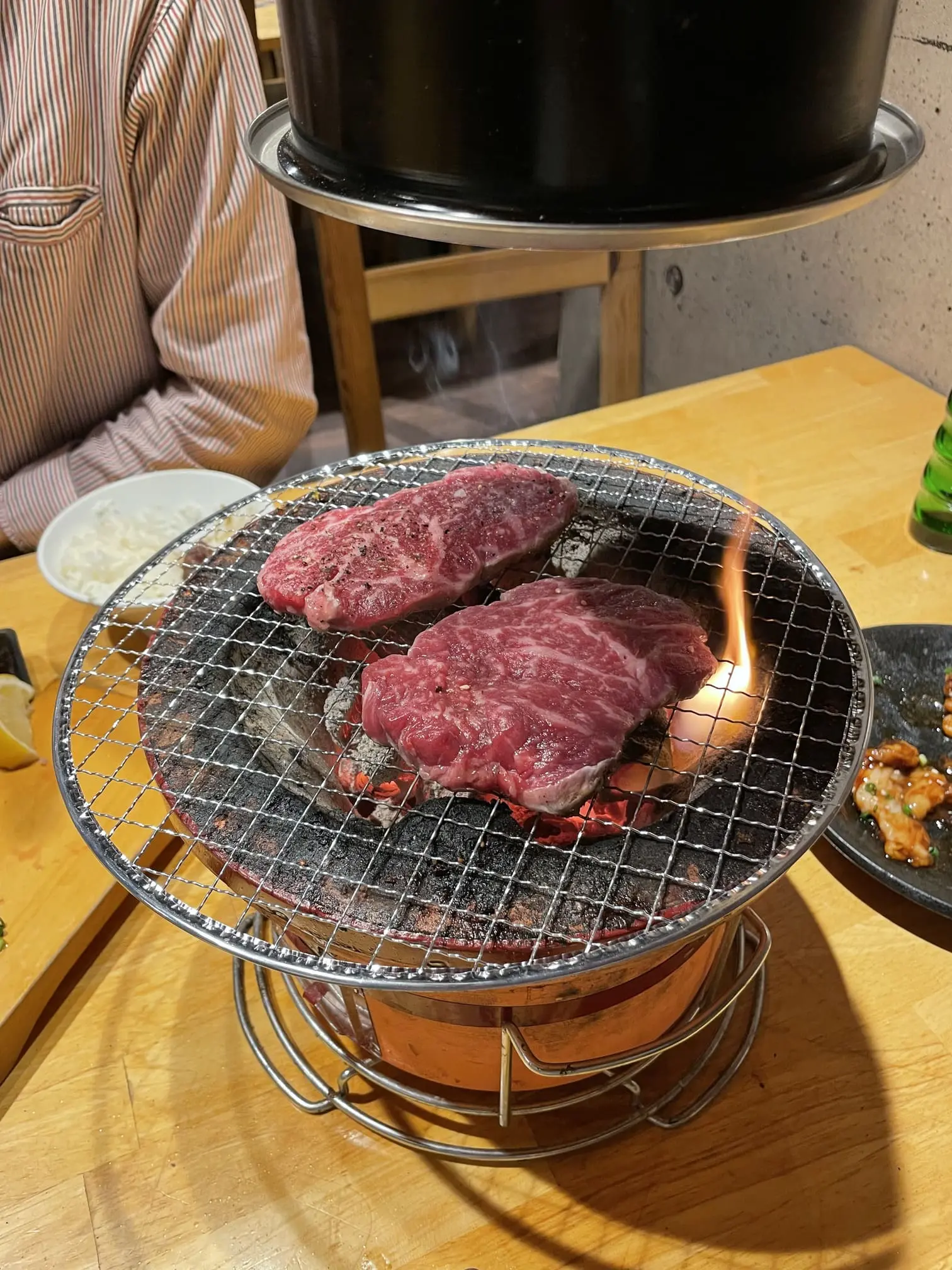Final arrival in Tokyo. The perfect time to wander around this sprawling, intimidating city. An organised mess, as a friend of mine put it so well.
I’ll be doing a few more bike rides in the heart of the city, letting my mind wander between the present moment in the capital and memories of the past that will shake me up forever. An exhilarating, nostalgic, pleasant but also heartbreaking feeling overcomes me before my departure from this island that will have marked this already legendary trip.
Today is dedicated to gift shopping and exploring the eastern parts of the city. Wherever you go, you feel the sprawling, tentacled nature of this metropolis on its grand avenues. Yet, stepping into smaller, quieter streets, calm prevails—the contrast is striking.
At the Tokyo Sky Tree shopping center, I search for chopsticks with cute cat designs for gifts. The clothing stores tempt me, but I resist, prioritizing my other wishes. My impression is that Japanese people have a true mastery of tailoring when it comes to fashion. The clothes are beautifully crafted, creating striking silhouettes that let the garments shine. Men and women who value style display impeccable taste. 😊
Next, I roam Asakusa for the last time, looking for fan shops, kimono stores, and enjoying a splendid view of the temple from the Tourist Center—a free, picturesque viewpoint I found after some online digging.
I eat at a small, charming Chinese eatery, and as usual, the service was lightning-fast—done in 30 minutes flat.
My second, more budget-friendly hostel is near Ueno station. Upon arrival, I realize it is the same one I’d stayed at before heading north. I smile with nostalgia and surprise. This location gives me the chance to explore Ueno again. Despite the crowds, the area has a raw charm—its narrow streets and intersections beneath the train tracks make it feel unique. The bars are lively and inviting.
I also stumble upon a store selling Japanese jeans (finally), Hinoya, and keep it in mind in case I couldn’t find second-hand options.
Later, I wander to Yanaka Ginza, where I savore a delicious ikayaki (grilled squid) from an elderly vendor, accompanied by my usual highball. Without my bike, I can finally indulge. The neighborhood is unassuming but charming, with beautiful fabrics for sewing and design.
I make a quick stop at Ikebukuro, but navigating by bike is hellish—the sheer human “traffic” make zigzagging unbearable. Better to visit on foot. Exhausted after an active day of shopping and scouting, I take a well-earned rest to prepare for unexplored parts of the city.
Day 60 Shimo Kitazawa, Shibuya and its Golden Gai END 2
I wake up early to visit Gotoku-Ji, the cat temple on the city’s outskirts. It is incredibly charming, with thousands of statuettes—a seemingly endless sea of white and red. My visit is brief, as they are out of stock of the statuettes I hoped to buy as gifts, next time maybe.
Next, I walk through Shimo-Kitazawa, Tokyo’s thrift store mecca (though there are others). At first, I enjoy the idea, but then I reflect on how it reveals Tokyoites’ frenzied overconsumption of clothing. The sheer density of thrift shops suggests a rapid cycle of buying and reselling.
I explore a few stores but have a specific mission: finding a Japanese-brand jean. My efforts are fruitless—90% of the jeans are foreign brands like Levi’s, Lee, Wrangler, and Dickies. Even asking the staff for guidance yields no leads. Slightly disappointed, I resign myself to buying new, which will dent my wallet further.
I head to Shibuya, home to the world’s busiest pedestrian crossing, which sees peaks of 2,000–3,000 people per light cycle and up to 2.5 million daily crossings. I feel a mix of excitement and slight anxiety while navigating the human tide.
From the Shibuya Hikarie building, I enjoy a breathtaking sunset view of the crossing.
Nearby, I discover Japan’s oldest thrift shop, Old Trump—blingy and unexpectedly tucked away in an unassuming building.
I also search for specific whisky bottles, particularly the Nikka Miyagikyo Coffey Still I discover in Sendai (Day 13), but I can’t find it—only more common labels are available. Gift-hunting demands patience and perseverance.
In search of more (free) skyline views, I visit the Tokyo Metropolitan Government Building. You can reach the top pretty easily with their elevator. The nighttime panorama is mesmerizing—you truly grasp Tokyo’s vastness. The unlit patch in the middle is Meiji Jingu Shrine’s surrounding park, a black void amidst the glittering city lights. My only disappointment is that you can’t see the Tokyo Tower (the city’s orange Eiffel Tower) from Roppongi, but that’s OK, the rest is superb, the black hole in the middle with no light is the park around the Meiji Jingu shrine, it’s really an abyss in the middle of the flashing lights and other glow of the rest of the buildings.
Later, I explore Shinjuku, Shibuya’s bustling neighbor. Walking alone in such a dense, populated area feels singularly overwhelming. Despite Japan’s overall discipline, the ceaseless flow of people and stress is a culture shock for a rural soul like me (I probably encounter my village’s population every minute here, haha).
Kabukicho’s streets, with their host bars and flashy facades, contrast sharply with nearby business districts. Escaping the hustle, I find Golden Gai—a quaint area of narrow alleyways with small bars preserving Tokyo’s pre-economic-boom charm. This used to be a prostitution area, but now it’s all nice theme bars.
Most of these places require a prepayment allowing you to stay and get some drinks however the one I pick is not so. I end up chatting with Claudio, an Italian traveler mixing business with leisure in the evening. I exchange my trip adventure and his professionnal stay in Japan.
Returning to my hostel takes nearly an hour—Tokyo’s scale is no joke, with its complex transit lines and vast distances. A well-earned sleep awaits.
Day 61 Asakusa, Akihabara and Ginza END 3
I spend my final morning in eastern Tokyo on Kappabashi Street, famed for chopsticks, cutlery, and woodworking tools. I pick up extra chopsticks for family and chisels and gouges for my father.
Continuing my shopping, I revisit Ueno’s Hinaya jeans store. The staff is incredibly friendly, helping me try on several brands: Studio D’Artisan (Osaka), Big John (a 30 oz beast!), Burgus Plus (the cheapest), but I settle on Momotaro (Okayama). Its fit, style, and thickness promise a beautiful patina with time. Can’t wait to wear it !
(PS: The me from the future appears to say that it would be wiser to take jeans one size bigger than what fits at the end of a long bike trip. My 68 kilos fit perfectly at the fitting, but my more usual 73 kilo frame struggles a bit more, I’m tight. A good lesson for my future end-of-trip clothing purchases 😀 )
After dropping off my jeans for alterations, I explore Akihabara, the mecca of kawaii culture, manga, figurines, and electronics. While tempting, it feels too commercial and crowded, so I defer figurine shopping.
Later, I head to Ginza and Tokyo Station, admiring the latter’s impressive architecture. The Kitte Garden rooftop offers a stunning view of the station and surrounding buildings. The soft lighting creates a surprisingly serene atmosphere amidst Tokyo’s buzzing chaos—a romantic date spot if there ever is one!
Still hunting for specific whisky, I find only overpriced or out-of-stock bottles. I will probably abort this treasure quest…
Ginza’s opulence is palpable, with salarymen exuding success and couples parading in chic attire. Then, when night falls, you can see the couples dressed in very sophisticated clothes parading through the streets. I almost feel like a stain with my conventional clothes on my bicycle. I pick up a children’s book for my cousin’s little ones and then went back to get my famous jeans before checking into a hostel further west.
I rush to visit Chinzan-so Garden before it closes. It shall be a garden in the middle of a hotel but available for free without renting a room or so (at least until the day I went). Despite the challenge of reaching it, the effort is worth it. The moss, trees, pond, pagoda, and lighting effects create a breathtaking oasis amid Tokyo’s concrete sprawl. The artificial mist adds an ethereal touch.
Being alone there is an incredible treat. Getting out, on the other hand, is a different kettle of fish, I manage to get lost between floors and a member of staff has to guide me up the escalators. I don’t think this hotel would be in my budget 😛
Finally, I end the day at a Buddhist monk-themed bar. The unique experience includes prayers (sutras) with the patrons and devilishly good cocktails (the one I take is literally named Jigoku : hell). The monks can even be DJ’s at some evening, sadly, not today.
The monks are welcoming, speaking English and answering my questions about their faith, including why they shave their heads and whether they can marry or have children. Pretty chill and pleasant conversation.
I will only divulge the address if some people ask me privately to respect the ‘hidden’ location.
The night ends with a peaceful bike ride through a deserted Tokyo—a rare moment of tranquility. Then, it’s time to rest in my fancy hostel.
Day 62 Kagurazaka and Nakano END 4
Waking up in the Kagurazaka district, I take a quick tour of the area. This place is renowned for its gastronomy and excellent restaurants, but my timing and plans lead me to eat elsewhere.
I head to Takadanobaba to try the tsukemen at Sanpoichi. The service is lightning fast; within seconds, I have my bowl of tsukemen (cold ramen served without broth). Let me tell you, it’s best to stick to the small or medium size. I went for the large and, not wanting to waste food, forced myself to finish it—my stomach regretted it for hours. You dip the noodles into a tasty sauce, and it’s a burst of flavor that makes your taste buds dance.
Next, I head to Shinamachi to relax and explore Tokyo’s quieter side, which isn’t far from the city center. It’s tempting to imagine living in such areas that combine tranquility and proximity to livelier neighborhoods. If I ever moved here, this would definitely be an option. A quick stop at Borzoi, a French-inspired grocer, leads to an excellent flan pâtissier. Most of these recommendations come from Guigui’s Ichiban Japan map and videos, which I’ll be thanking even more later. It’s pretty amusing to see faces of people I’ve only seen in videos before; it’s disorienting yet oddly comforting, like reliving moments captured through a camera.
I also make a quick stop at Suga Jinja for a last “Your Name” fanboy session 😛 The stairs from the movie’s ending are here, and a handful of us are “queueing” to snap a good photo. The shrine itself is worth a brief visit if you’re in the area—it’s charming and will melt the heart of any movie fan.
To wrap up, I head to Koenji to check into my final hostel in central Tokyo. This district is known for thrift shops, though it’s less popular than Shimokitazawa, which I visited earlier. Its neighbor Nakano is more famous, particularly Nakano Broadway, packed with figurines that interest me far more than those in Akihabara. The pieces here are rarer and more unique (just don’t mind the over-sexualized ones—some are downright weird, I must admit 😀 ). I get there after 22:00, too late to explore properly, so I’ll return tomorrow if I have time to pick something up.
Nakano’s narrow, lively alleys are great for wandering in general.
The cherry on top of the evening is having chankonabe at Rikishi, a restaurant run by a former sumo wrestler. It takes me a while to find the entrance, but spotting the sumo-themed fabrics clicks in my brain. Honestly, the chef/owner is a gem. We communicate as best as we can—my broken Japanese gets us by—and watch the finals of the Japanese baseball championship (Yakyu) together.
My pot of sumo stew arrives. This dish has a lot of history, being the staple meal for wrestlers in training stables. It’s traditionally eaten before bedtimes to better absorb the calories and turn them into the useful weight that wrestlers need. Some versions use only chicken, as it’s an animal that stands on two legs, symbolizing the wrestlers’ upright stance during matches. Mine includes chicken, fish dumplings, lots of vegetables, and mushrooms. Honestly, I think the dish is fairly healthy despite the high calorie count—it’s more about the portion sizes and frequency that make sumo wrestlers the 150-kilo giants they are.
Eating it is simple: transfer the desired contents from the pot to your plate and enjoy while the rest stays warm over the fire.
This day has been all about food, and my body feels it. I return to the hostel that night with a light heart but a very heavy stomach… already nostalgic for these daily feasts.
Time for bed.
Day 63 Machida Tenmangu then Haneda END 5
The hunt for gifts to bring back home isn’t over yet. I head to the flea market at Machida Tenmangu Shrine, held every 1st of the month except January and November (double-check dates on a site like this one).
It’s a treasure trove for beautiful finds, whether clothing or otherwise. I planned to spend 2 hours here, but I end up circling back five times, giving in to various shopping impulses. The result? 5 hours of browsing and buying: two rings, two kimonos, two obis (kimono belts), four drawings, two postcards, a table runner, and two kokeshi (traditional Japanese wooden dolls).
My “reasonable” frenzy brings me so much joy. I can’t wait to distribute all these gifts—I feel like a mini Santa Claus! All this for just 10,000-12,000 yen (about €60). It’s so worth it. I was tempted by the tableware too but worried about transport and space in my luggage (I still need to find some boxes for packing). A funny discovery: one of the kimonos I checked had a small bloodstain on it, suggesting it might have belonged to an elderly person who’s now deceased. Oh well, eyes closed, moving on haha.
In short, I highly recommend visiting at least one flea market during your trip (there are others you can find through websites or Instagram recommendations). Hidden gems are waiting on these stalls.
My time in the city is running out. My plans for the afternoon are thrown off by the flea market visit. I quickly retrieve my bike and optimize my packing.
The day’s final mission? Find a big, sturdy box for my bike, just like the one I had on the way in, the quest for the Holy Grail starts. After four failed attempts at bike shops, hope dwindles as I near my hostel and the airport. But suddenly, I strike gold: at the second Cycle Base Asahi store (Maps link if it can be of use to others in similar distress), they have the perfect box with just the right dimensions and thickness. The staff are lovely, and I reserve it for pick-up tomorrow morning.
That evening, I meet Chin, a Korean talent manager in town to pitch his actor to Japanese clients. His limited English and lack of Japanese make me wonder how he negotiates, but I wish him success.
Together, we enjoy a horumon (offal) barbecue, ending my Japanese food journey on a high note. Grilled intestines, tongue, and a small Wagyu steak each—our stomachs are grateful. Thanks to the rich and flavourful seasoning, the offals get easy to eat and are not that hard to taste 🙂
On the way back, we discover a very nice shrine close to our hostel, Anamori Inari Jinja. If you’re just passing through and have some time to kill before/after a flight to Haneda airport, it’s definitely worth a visit.
Then we head back to the hostel for a few beers and meet a young Polish girl, Olga, who is just starting out on her trip of several weeks in Japan. It feels like passing the torch. We share a few tips and life experiences before going to bed.
Tomorrow will be a busy day.
Day 64 Haneda Airport Grand Final END 6
Saigo no hi / 最後の日 (last day in Japanese).
The morning starts with breakfast for three, followed by another visit to last night’s shrine, Anamori Inari Jinja. In the daylight, it’s bustling with activity, as elderly locals distribute udon and soup. After heartfelt goodbyes, I rush to collect my box.
The bus ride back with it is a bit awkward—I inconvenience a few passengers, but sometimes you have to push through.
Once at the hostel, I strategize packing. First, I bike to the nearest airport parking lot, then return to pick up the box and remaining items. As I pack everything into two boxes at the airport, Mount Fuji bids me farewell with a perfect sunset view—a fitting goodbye.
Then I take it all back to the airport, where I have a few hours of fun dismantling the bike and arranging all my stuff neatly into the two boxes I’m carrying.
I could have done simpler things with transport companies, but I wanted to manage everything myself. It was a sort of final challenge that I met with a lot (perhaps too much) of effort.
My boxes weigh 46 kilos—way over the limit. After paying for 15 extra kilos (25+15), I still need to offload 6.
Out go a pannier, my torn tent, gas bottles, excess cardboard padding, and a few other bits I manage to squeeze into my carry-on. I hit exactly 40 kilos and breathe a sigh of relief just in time for check-in.
The nostalgia hits hard as I savor a final bowl of udon before boarding the plane. It feels like leaving a part of myself here, unsure when I’ll be able to return.
On the flight, I replay the journey in my mind:
- the tough start with transport and physical exhaustion
- extremely welcoming and nice japanese people
- meeting an exceptional travel partner
- breathtaking sceneries (sometimes less pleasant for my thighs)
- vibrant never sleeping cities
- coastal surprises of the Sea of Japan and Setouchi
- and a finale with THE symbol of Japan and its capital
What an adventure. I can’t wait to recount these memories and relive them through writing in my little journal (what you read until here).
This land has become dear to me, and while my fascination is fulfilled for now, there’s so much left to appreciate about this culture and its wonderful people.
日本と日本人の皆さん、本当にありがとう

